marketing beyond
your core audience
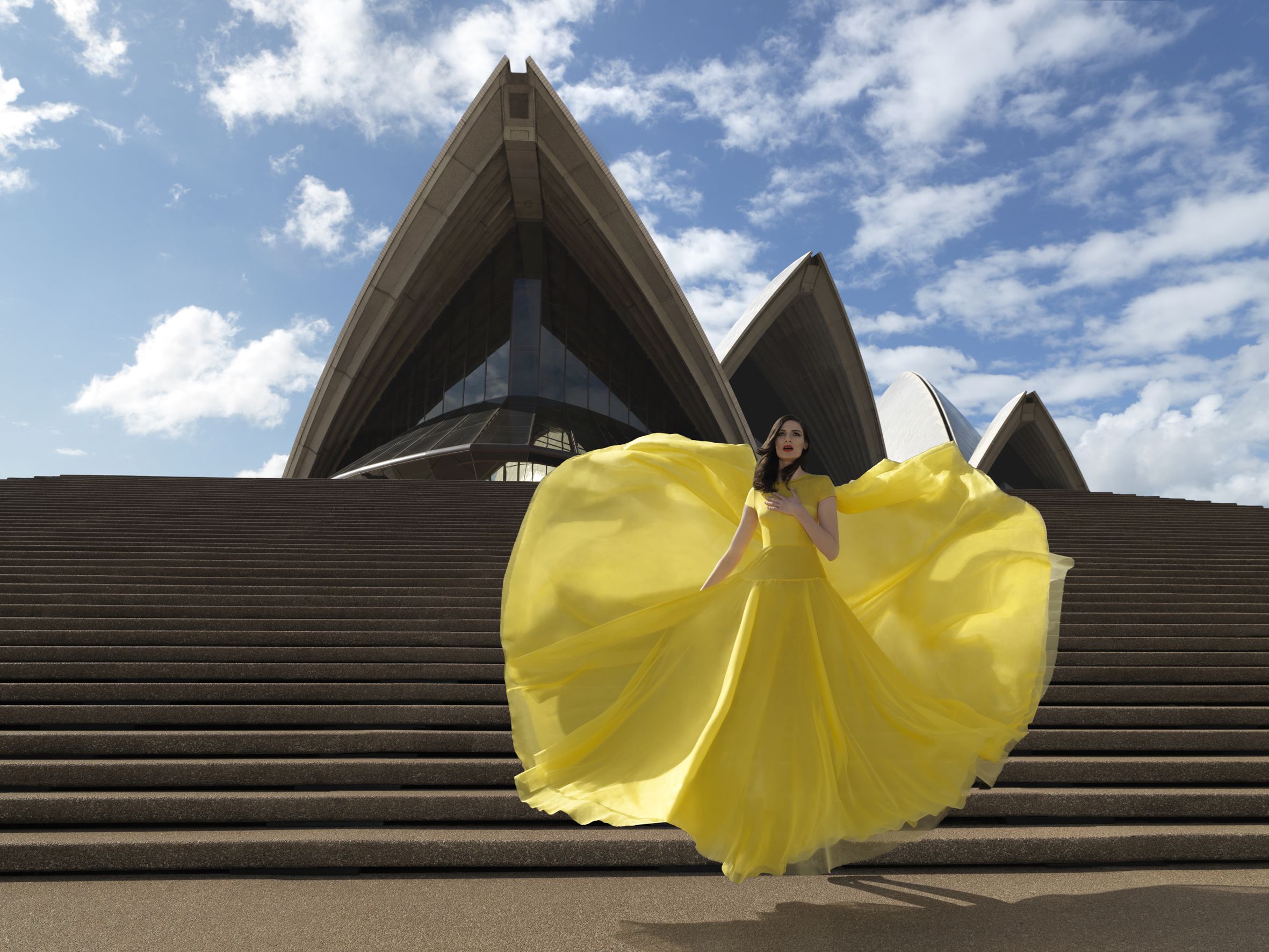
Introduction
How do you sell a product few people have heard of, many don’t think they need, and that costs a lot?
What happens when your core audience is shrinking and lots of your content is available for free online?
Where do you look for new audiences… and how would they find you?
At Opera Australia, we have to answer those questions every day. And since we’ve been asking them, attendance at the opera in Sydney has risen 28% in 8 years and we've become the only major, year-round opera company that generates more than 50% of its income from ticket sales.
This is a story of how we got to know our audience and changed our marketing to meet their needs. These tactics might not serve your organisation in the same way. But just as we are always learning from others, we hope this serves as a challenge to arts companies to examine their unique and changing circumstances, get to know their audience, and discover new income streams.
As we go into 2021 in a world changed by the COVID-19 pandemic, we’ll have to adapt all over again. Lots of the work described here has become impossible. But now we know how to change.
Why does arts marketing need to change?
Once upon a time, the audience was full of people who were born in a world where classical music was the music. Then the record industry succeeded in making musicians famous, and the best ones sold tickets. As the recording industry declined, we sold tickets off the names of composers and pieces. Now we’re in an era in which 70% of young Brits have not heard of Mozart.
It’s hard to picture a future in which many people will buy tickets to see a Bruckner symphony or Salome. The truth is, for many people the Star Wars soundtrack or Frozen offer greater emotional impact, as well as a sound world they understand, and an experience they want to share.
Is education the answer?
There is no doubt arts education is lacking. One Australian musician tells a story of hearing a radio interview with an Indian chef who had moved to Australia in the 1970s. The chef described her horror at realising that Australians’ idea of Indian food was curried sausages. She made it her life’s work to educate us about Indian food. Listening to this, the musician realised that when it comes to understanding classical music, many people are at the curried sausage stage. In some ways education has worked for food, but if it works for the arts, why isn’t Shakespeare popular? We all studied his work at school.
Is better customer relationship management the answer?
Arts marketers run enviable loyalty programs: subscriptions. Other industries would be delighted if their customers paid 6–18 months before receiving the service, year after year. But the arts world’s secret is that 60% of customers have only been once, despite our CRM efforts. We tell ourselves that if people would just try the symphony/opera/ballet/theatre, they’d love it, and we’d have a fan for life. Turns out that’s not true. To be fair to ourselves, Byron Sharp has shown that the majority of customers for any product or service rarely buy it.
How about accessible pricing?
Two of the richest people in the world own Zara and IKEA, both businesses built on making design affordable by skimping on production quality. That consumer preference is anathema to the bespoke nature of the arts. But despite our preference for high standards and prices, within the last few years, all art has become free on-demand. Artists no longer control access to art. Search YouTube for Rigoletto and you'll find thousands of videos, including 20 complete performances. Thirty years ago, if you wanted to see Rigoletto, you had to buy a ticket. You couldn’t even buy a video, never mind watch it for free. Price is no longer a barrier, but it turns out that making art accessible is not enough.
What now?
Of course, at Opera Australia, we continue to do all of these things. We create educational content, we run subscriptions campaigns, we offer accessible pricing and use many other tactics that all arts marketers deploy. But they are no longer enough.
Every arts company must also have its own unique marketing strategy, based on a diagnosis of its particular situation, customers and value proposition.
All arts marketing is not the same
Arts marketers are very good at sharing ideas, but the truth is, one-size-fits-all arts marketing will not work. Let’s consider just three companies operating in Sydney:
1. The Australian Chamber Orchestra is a cult of fans. Fans get fans. Nine out of ten new subscribers know an existing subscriber. So the winning marketing strategy is deep customer service that connects the fan to the musicians, and makes them talk.
2. Opera Australia is a luxury FMCG, churning through hundreds of thousands of expensive tickets, so however niche opera is, targeted mass marketing is required. Also, OA’s most successful events are opera-based tourist attractions, so tourism marketing is essential.
3. Sydney Philharmonia Choirs succeed when the choristers persuade their friends and family to attend, so the task of the marketer is to give the choristers tools to do that.
That makes for three very different arts marketing jobs, requiring different skills, and unique strategies.
Developing new strategies
How do you find your unique strategy?
Mark Ritson says the first step in developing a marketing strategy is to understand that your customers don't know or value your product like you do.
People working in the arts assume the art and artists are most important. That’s why the audience is there, and that’s what the marketing should be about. But spend time with occasional ticket-buyers and you may be shocked to discover that they often know almost nothing about the art or the artists.
Customers don’t only attend because they want to see a particular performance or artist. They are also there because they gave it as a Christmas gift, or they want to spend time with their parents. Perhaps their aunt is visiting from France, or they are staying near the concert hall.
By finding out what needs your customers are meeting with your events, you can discover new marketing opportunities and audiences.
Where to begin?
Talk to your customers! Invite them for drinks before a performance, and they’ll tell you why they are there, overturn your assumptions, and trigger new ideas.
It may sound unscientific, but this sort of research is highly rated in the field of customer experience design. When you hear directly from customers, knowledge becomes visceral.
Here's how we do it:
1. A week before the performance, pull a list of the segment of customers you want to talk to.
2. Send them an email: “You’re invited to join me and a few colleagues in the marketing team for a complimentary drink before the performance. We find it helpful to meet members of our audience and look forward to talking with you.” By saying that, they will know you want them to answer questions for their drink.
3. Invite one team member per ten customers.
4. Ask, “do you go to performances often?” That's usually enough to elicit their history with the art form, why they are there, what they are expecting, and more. Team members might ask questions relating to their work, such as, “what media do you look at to find about events?” or, “did you have any trouble buying a ticket on the website?”
5. Look for patterns in the answers, to uncover new markets you can serve, needs you can meet, and tactics you can deploy.
Even if you glean nothing (impossible), you’ll make customers feel important.
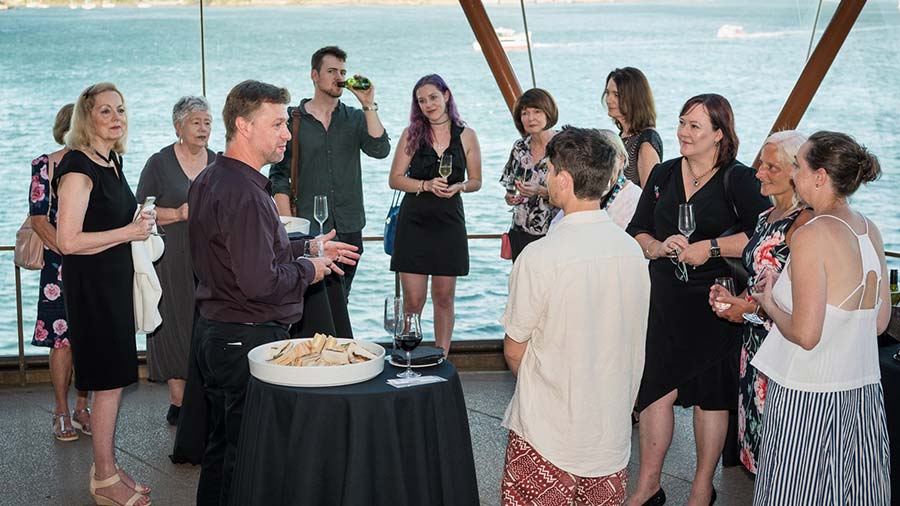
Meeting customers before a performance at Sydney Opera House. Photo: Rhiannon Hopley
Meeting customers before a performance at Sydney Opera House. Photo: Rhiannon Hopley
Who are we talking to?
By talking to our audience, we discovered we have three major customer segments:
1. The core audience, who love the art form for its intrinsic value
2. People who attend the arts for social connection
3. Tourists (who can also fall into the first two categories)
We identified these groups through qualitative research, but because we love data, we confirmed it quantitatively using the Morris Hargreaves McIntyre Culture Segments model.
Instead of just looking at consumer behaviour, this model helps us identify consumer motivations and values. Around 40,000 customer records in our database (we use Tessitura) now include their Culture Segment.
Just 20% of our ticket-buyers fall into segment one: our ’core audience’ of opera lovers (Essence culture segment).
Nearly half (46%) of our ticket-buyers come to the opera for social connection (Expression and Affirmation culture segments).
Our marketing copy and images used to speak to the core audience of fans who follow the careers of individual singers, see multiple productions of the same opera, and can name many composers. Trouble is, the same copy that motivates a super-fan to buy a ticket could alienate someone looking for a great night out with friends. We were ignoring the 46%. With this information in our database, we can now tailor our messaging so the same product answers different needs.
Who might you be ignoring?
Four new strategies
While we continue to refine our traditional arts marketing tactics, familiar to companies around the world, at Opera Australia, we’ve also added four new strategies to drive growth.
4. Enhancing the customer experience
Some of our experiences and discoveries are shared below.
Marketing the Benefits
It's about the customer (as well as the art).

At Opera Australia, we haven’t changed the product, but we have changed what we are selling, after speaking to audience members about their motivations.
Arts marketing used to feature only the art and artists. But that kind of advertising can be alienating, and worse, incomprehensible to most people. Imagine sitting in a taxi and passing signage for a season of Wagner’s Ring Cycle — our flagship event — and hearing the driver say it was advertising a bike ride around the Ring Road. (This is a true anecdote, and we learned our lesson.)
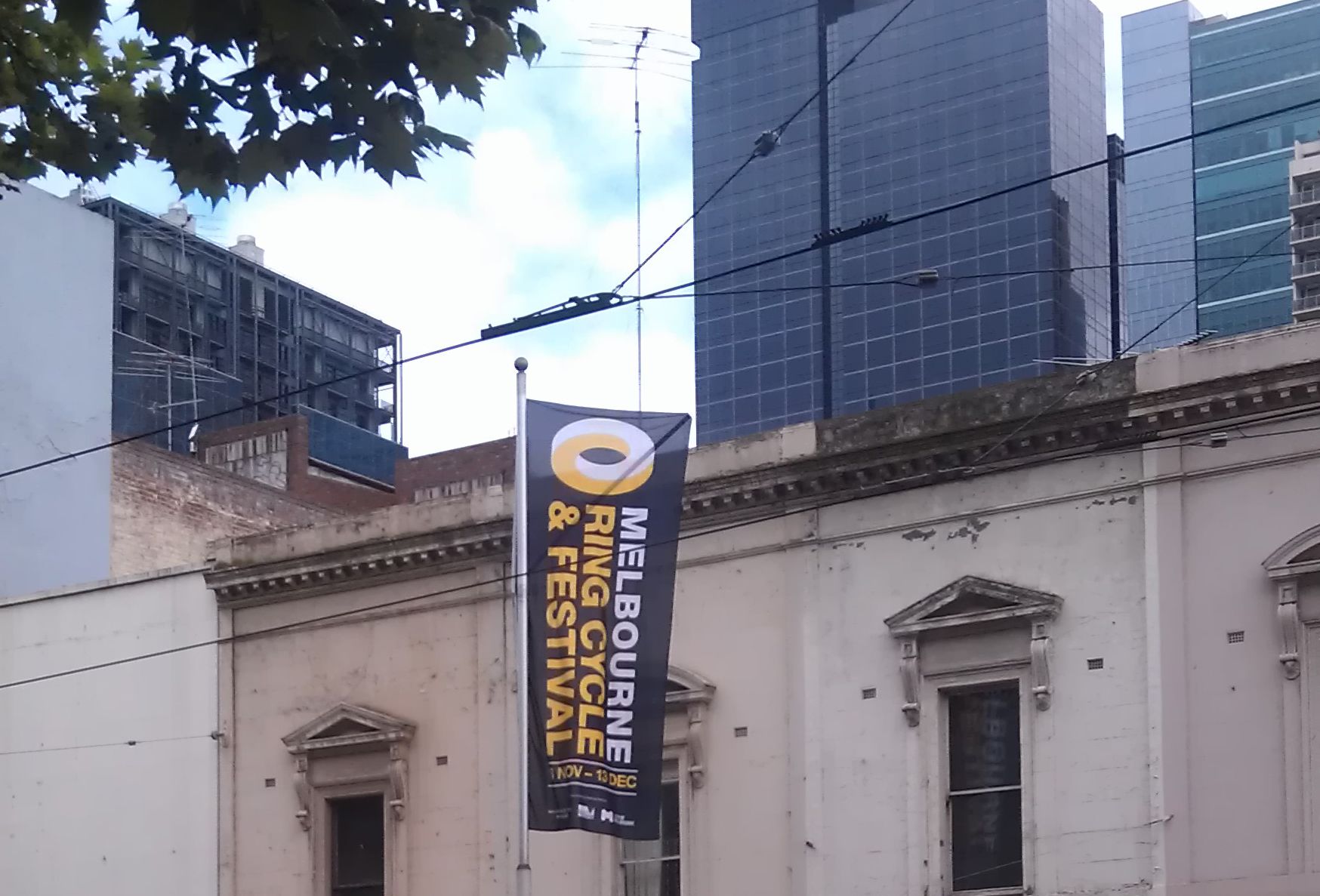
Research showed us that 70% of people who said they were interested in opera could not name one. Many named The Phantom of the Opera (a musical) or The Nutcracker (a ballet) as their favourite opera, in a survey we conducted with The Insights Grill.
There’s no point being snobby about this. Advertising the name of an opera works for some audiences and 70% of our advertising still does this. For others, we advertise... opera. That advertising converts at a similar rate, and delivers customers we couldn’t reach advertising specific titles.
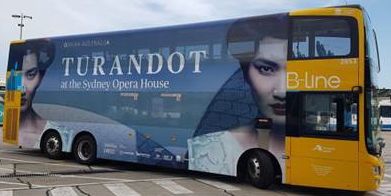

It’s a huge relief that customers don’t find lack of knowledge a barrier to attending. We don’t need to despair about declining arts education when we can sell tickets to people who aren't familiar with the arts. We just have to present the arts as a solution to the needs they have, and find them where and when they are looking for solutions.
It’s an old marketing concept: sell the benefits, not the features. We haven't really had to do it in the arts, because until recently, naming the work and artists (the features) has been enough. Now, no one needs to see La Bohème or The Magic Flute, but they do need a birthday treat for their partner, or a gift for their mother, or somewhere to go on a date. In other words, they need ways to enrich their relationships through shared experiences, as the National Endowment for the Arts discovered.
Possibly, after the COVID-19 pandemic, the need for the arts to bring people together, create connection and enhance relationships will be greater than ever.
Some think that demonstrating the benefits of the arts, instead of focusing on the features, is crass. They believe that naming the composer and performer should fill the hall. That misses an opportunity to secure financial resources for the arts (just like zoos promote themselves as places for children’s parties and holiday entertainment, and thereby make money to fulfil their mission to conserve wildlife). It also undersells the arts. Seth Godin has said the value of live music is that when you have something that draws on emotion so viscerally, you can cut through different world views and create a shared experience. That is something to celebrate.
Let’s look at practical examples of ways in which marketing can show how arts experiences enrich relationships and build self-esteem, and thereby fill halls. The examples fall into five categories:
Gift giving
Experiences make the best gifts because they are memorable and ephemeral, and can include time with the gift-giver. Birthdays, Christmas, Mother’s Day or Father’s Day can be solved with tickets.
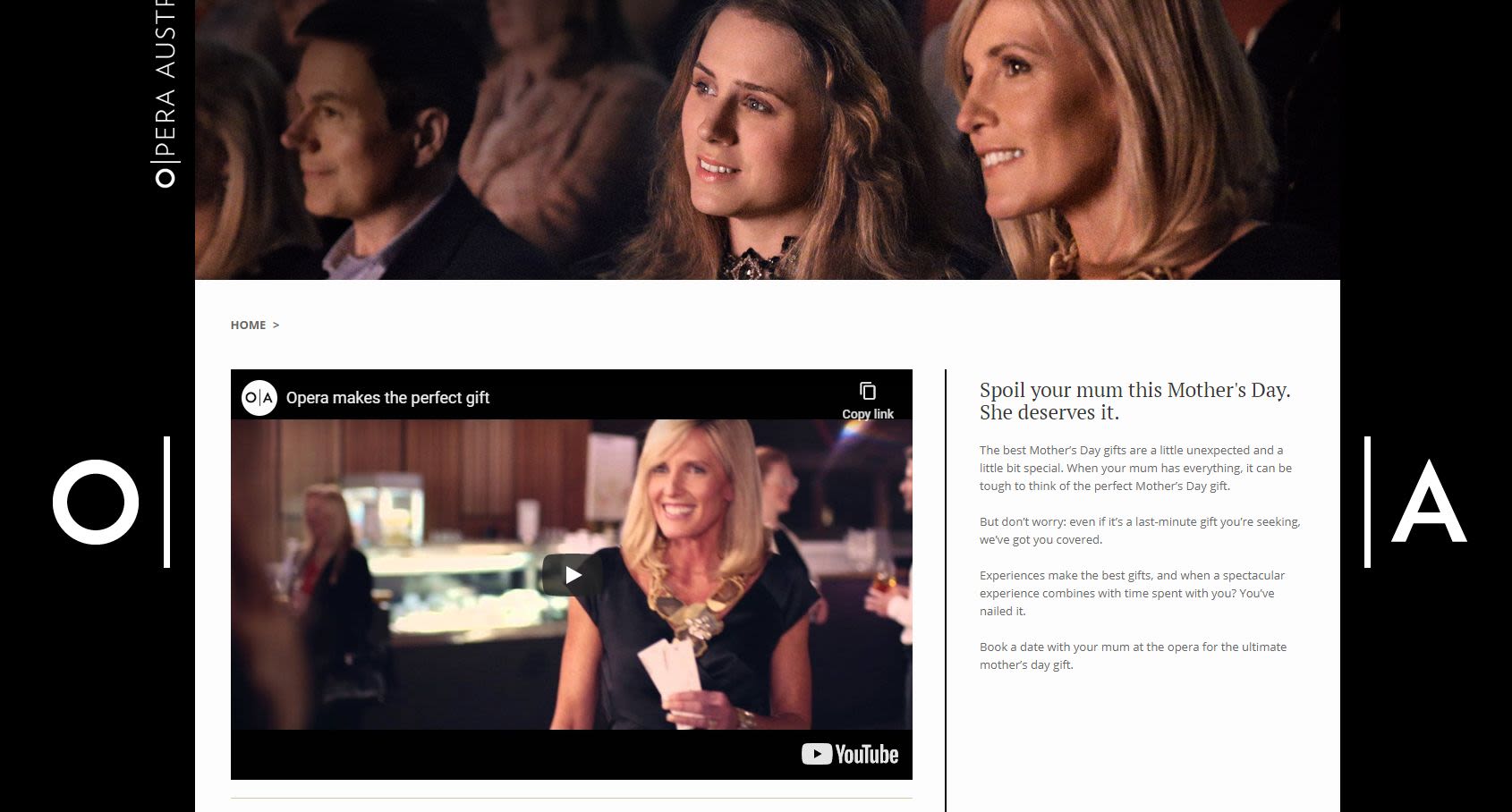
Gift vouchers
We sell gift vouchers for two tickets as well as for cash amounts, so the purchaser doesn’t have to pick an amount, date or production, which is helpful for a novice buying for a fan. Gift vouchers are bought as late as Christmas morning because they are delivered instantly.
Marking occasions
Marking important occasions at arts events guarantees a favourable impression.
Valentine’s Day
OA performs on Valentine’s Day and has twice provided singers to The Bachelor, to position opera as a romantic date option to its million viewers.

Marriage proposals
For a fee, we'll facilitate marriage proposals on stage, in front of the audience or before they arrive.
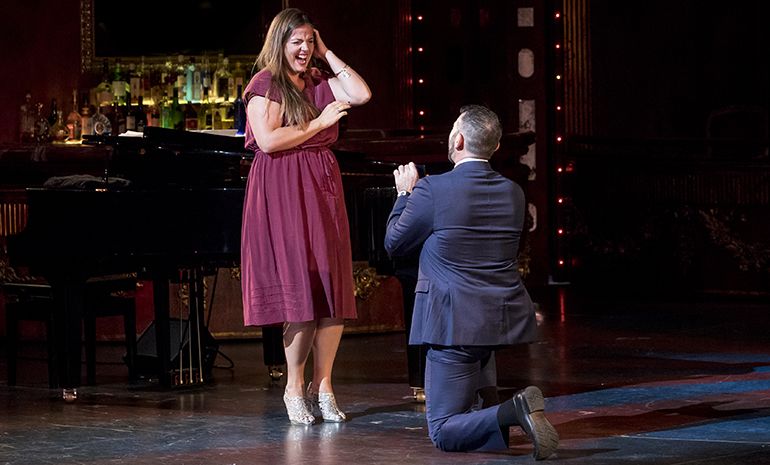
A marriage proposal on stage at Sydney Opera House.
A marriage proposal on stage at Sydney Opera House.
Anniversaries
Just before the pandemic hit, we were about to launch a package for those wanting to make an anniversary impressive, comprising two Premium tickets, champagne, flowers and a message on the surtitle screen. The package can be arranged on the day for those who have forgotten the date.
New Year
Our New Year’s Eve gala at the Sydney Opera House gives people from all over the world a glamorous night and a great view of the fireworks.
We also advertise performances around Lunar New Year in Chinese, and many Chinese families on holiday attend OA performances at the Sydney Opera House. Our more popular operas now include Chinese surtitles.
Corporate rewards
Client rewards
Corporate partners entertain clients at performances and companies including American Express use priority booking as a customer reward.
Staff rewards
Some Chinese companies fly their top 2,000 staff overseas as a reward. We combine their staff award ceremony with a performance, and sell out the theatre two or three times a year.
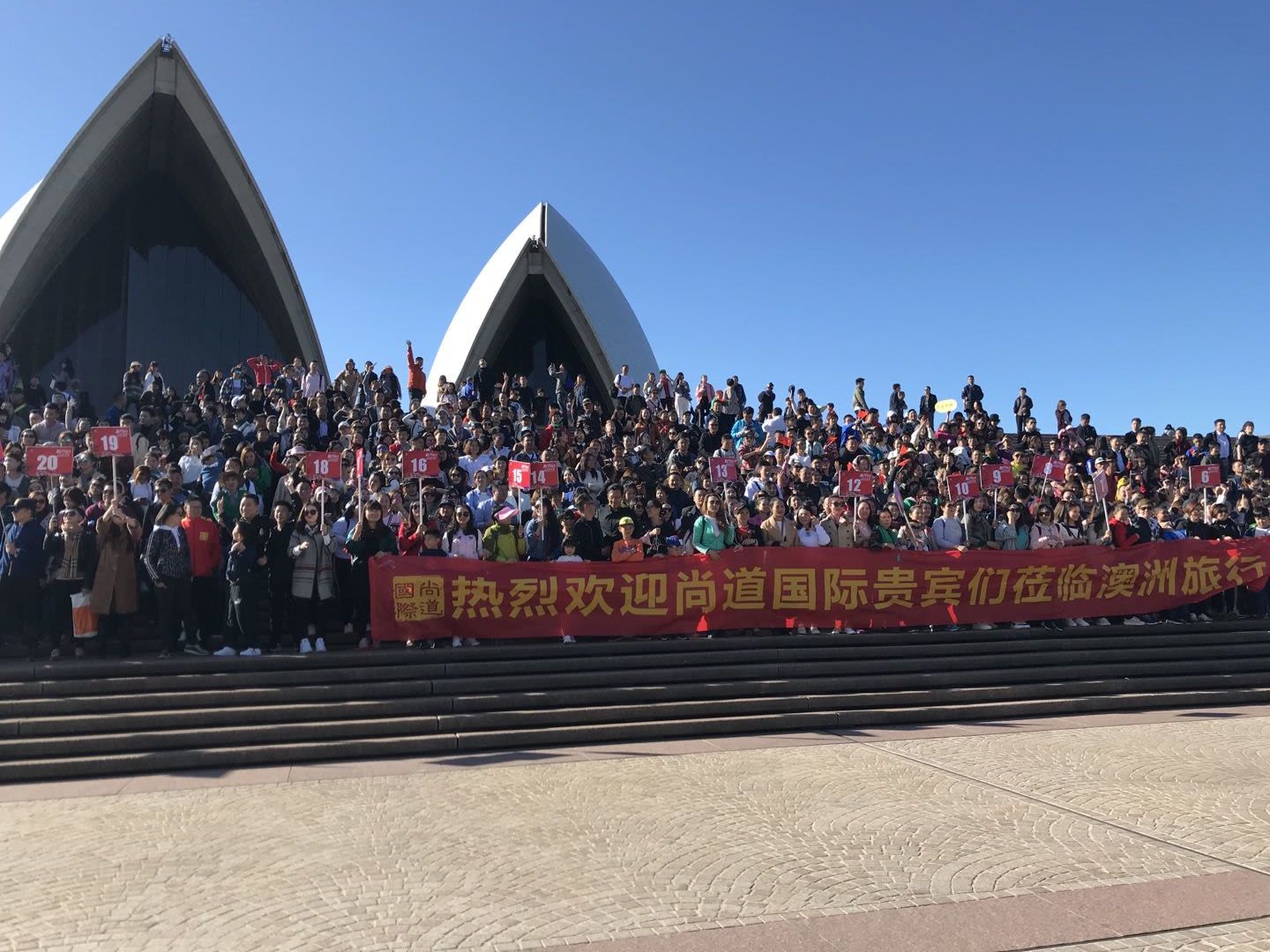
Impressing others
Sharing on social media has become an important part of arts experiences, and helping people to do that will amplify your marketing and boost attendance.
Every night is opening night and every entrance is spectacular
We encourage audience members to boast about attending the opera by giving them photographs of themselves to share. We hire photographers to take photos in the foyer before every performance and post them on Facebook the next morning. Audience members find and share their photos, and normalise the idea of attending opera for their friends. The photos demonstrate that all sorts of people attend the opera, and help overcome the fear that it is not accessible. Plus, they give us great photos of our audience enjoying our product — which we can use in our marketing.

Money-can-buy experiences: walk on stage during the opera
For those who really want to show off, we sell walk-on roles. It’s a life highlight that participants dine out on for years. The benefit for us is not just the income, but the attention it gets. Tourism Australia markets it globally in its Signature Experiences program. Media in Australia, USA, UK, and China have written about it. Few are brave enough to do it, but after reading about it, they think seeing opera is a must when they visit Sydney.
We occasionally offers walk-on roles for dogs, by audition only. Nothing gets more attention on social media.
Reinforcing status
Marketing works when you promise to make someone an ideal version of themselves. Trevor O’Donnell shows that this remains uncommon in the arts, with brochures listing programs and artists (features), instead of showing the audience looking engaged and enriched (benefit). We focus on demonstrating how the audience will feel with campaigns like ‘Opera, Sydney-style’.
Pitching the right status level is tricky. As Seth Godin says, people use purchase decisions to signal the status level at which they feel comfortable. For some, attending the performing arts signals high status, for others pop culture is cooler; either way, showing celebrities at the performance can help. Within the audience, there are gradations. Those attending Wozzeck look down on those at La Bohème, who are proud not to be at Grease or the cinema. It’s important to speak to customers where they believe they belong.
Tourism Marketing
Become part of the tourism industry, as well as the arts industry.
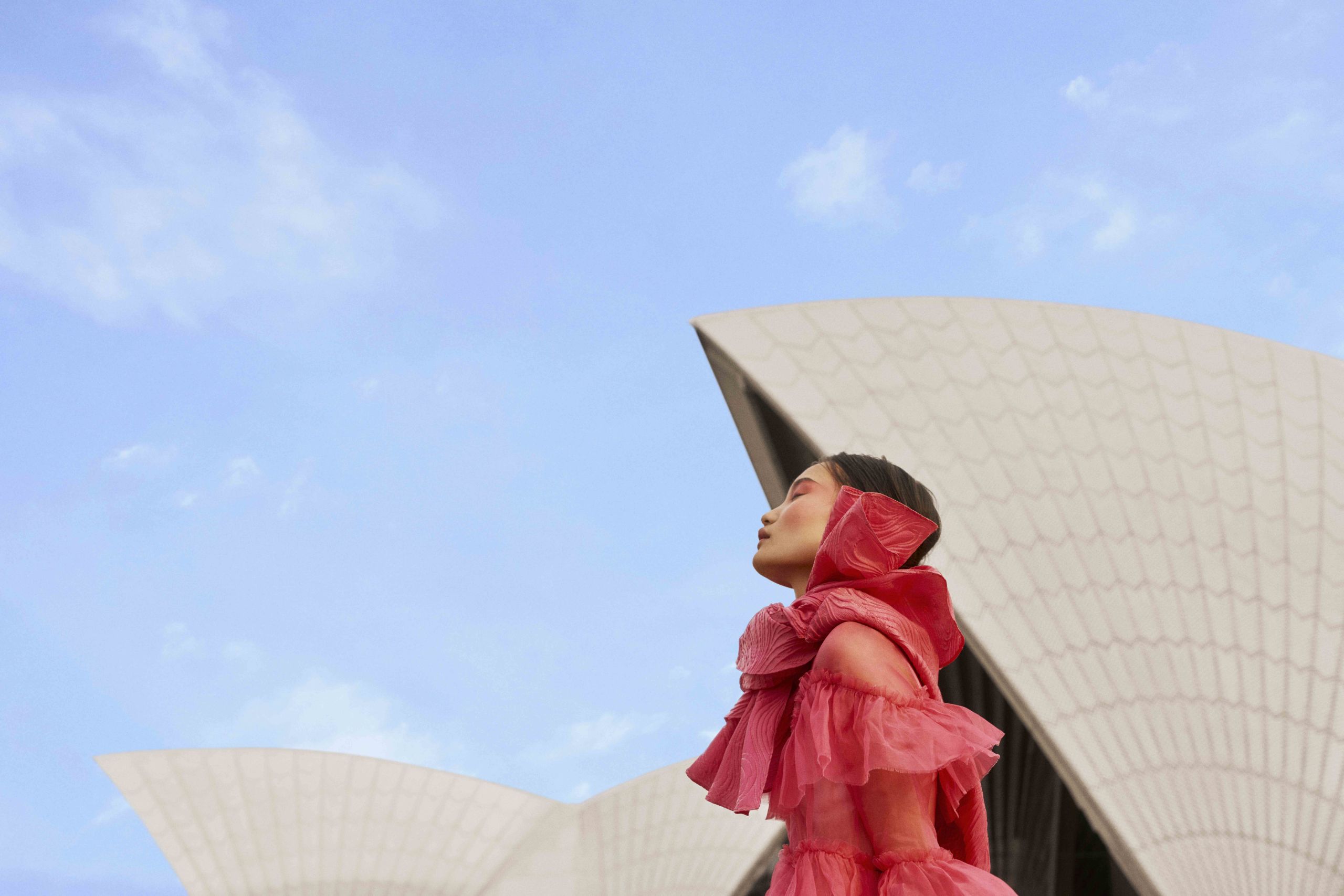
The classical performing arts are expensive. In most places, they are sustained by government or philanthropic funding, but the willingness of citizens to fund them is diminishing. They have failed to keep up with modern tastes and been replaced by pop music, musicals, movies and TV. “Classical” is not the same as perennial. Soon, we will mark the 100th anniversary of the death of Puccini. A hundred years since an opera was written that can make any money in the 21st century.
But the classical performing arts are part of our cultural heritage, so they won’t die out. They will join the superficial market that maintains art galleries and museums. When people travel, they visit galleries just to see the famous painting... Mona Lisa, The Kiss, The Scream. It’s fleeting, but it keeps historic collections afloat. The performing arts are a similar curiosity for travellers. When you visit Vienna, you go to a Strauss concert. In Venice, Vivaldi. If you work for an orchestra, your potential audience — the people in your community that are open to classical music — may have already had their concert experience for the year while travelling.
When you visit New York City, you see a Broadway show, even if you’re not interested in musicals. Our goal is to make seeing an opera at the world’s most famous opera house the default for every visitor to Sydney, regardless of their interest in opera.
Tourists make a great market because they are actively looking for things to do, and can justify the expense because they might never be back. At home, by contrast, we are trying to get to our sofa each evening, and feel no urgency to do activities that are always available. But being a tourist has challenges. You walk a lot, so your feet hurt and you’re tired. You’re scared of asking dumb questions and not being understood. You’re scared of looking cheap or being ripped off. You’re scared of doing the wrong thing. Successful tourism marketing must reduce those barriers.
In Rome, there is marketing collateral and ticket sellers for opera performances at every hotel and tourist attraction. Unfortunately, these active sales programs are for performances put on for tourists, not for Rome Opera, invisible in its citadel. Many arts companies fail to actively ask people to buy their tickets, or to make it easy. Perhaps they think marketing is pure, and sales are dirty. But when you do it right, sales is actually just good customer service.
Maybe arts companies don’t recognise that they are also tourist attractions. They don’t recognise the benefits they are offering their customers, so they only promote the art and not the complete experience. An exception is the Aldeburgh Festival, which was founded by Benjamin Britten and is a serious and artistically-driven event. One year, their brochure showed black-and-white pictures of traffic and crowds in London, followed by coloured pictures of the beautiful countryside around Aldeburgh. They weren’t just selling performances, they were selling escape, a weekend away in a beautiful location with fine music. Too many festivals in beautiful locations fail to exploit that opportunity.
Travel products created for people who have retired in a good financial position are booming (hello European River Cruises!). Music-based tourism products work particularly well.
We have location-specific events that motivate travel. 15,000 people travel to see Handa Opera on Sydney Harbour each year; the event is supported by the state government tourism agency, Destination NSW. The Queensland and Victorian Governments support the Ring Cycle because to see it you must stay in the host city for eight days, so the economic impact is significant. Voyages, managers of the hotels at Uluru, arranged an opera concert near the rock and it sold out in four days.


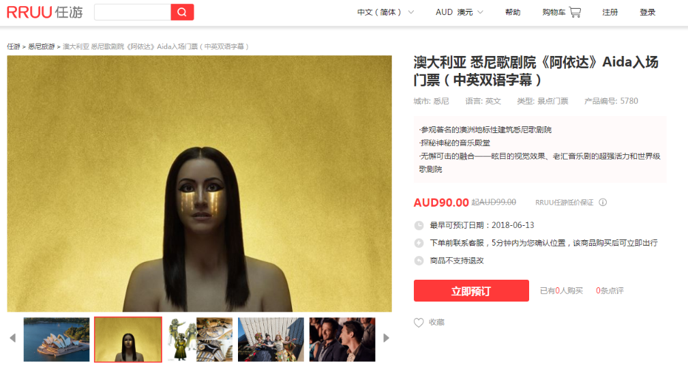
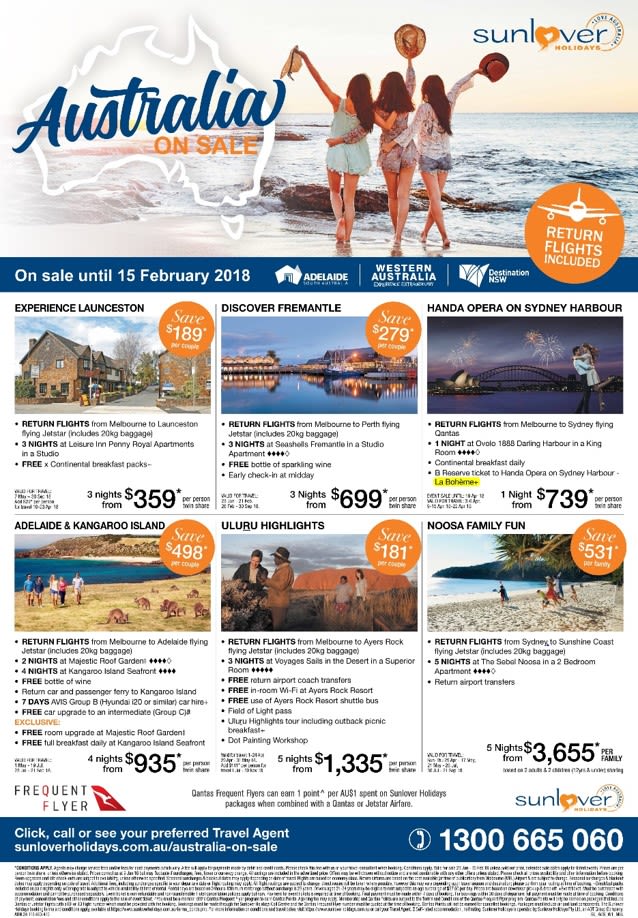

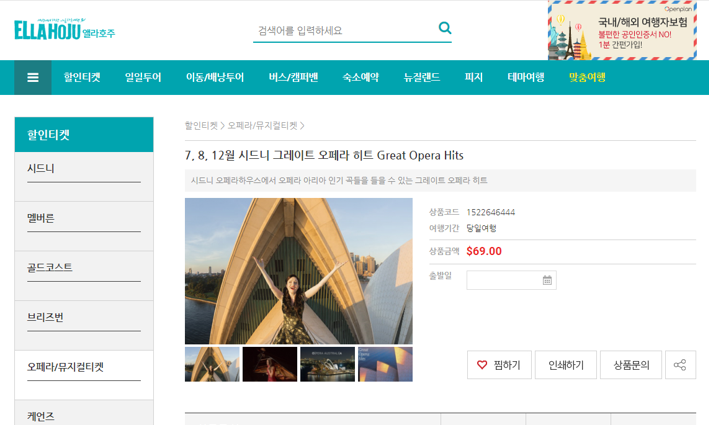










How to work with the tourism industry
Most tourism sales come direct from customers, but if your product is suitable, it’s worth selling through agencies. Travel agents sell tickets, but equally importantly, they publish guides, make recommendations, and influence the decisions of travellers who later book with you direct.
Six years ago, few in the tourism industry believed their customers would go to the opera. The travel agents themselves were afraid of opera, so they assumed their clients would be too. So we re-organised our sales and marketing operations to fit the tourism industry and sales to tourists have doubled.
Here is some advice for arts companies wanting to work with the tourism industry:
Commission
You must pay a commission out of your normal ticket price. Travel agents receive a percentage of every sale they make. Unlike other forms of marketing, you don’t pay unless the sale is made, but then it’s up to 30%. Don’t think you can negotiate. It’s industry standard and much bigger players than you pony up. The tourism distribution system is complicated and you have to learn to navigate it.
Terms and conditions
Offer flexible terms and conditions. Although it is not the norm in the entertainment industry, travel companies expect to be able to cancel up until two days before a performance, and to pay after the performance.
Announce early
You must commit to dates and prices early. In Australia, arts companies usually announce the following year’s season in August or September. The tourism industry wants dates and prices in April, ready for trade shows. They don’t necessarily need to know the name of the show, but they do need to know something is on that evening.
On the other hand, you should also hold tickets for them to book late, so that they can always serve their clients.
Consistency
If your performances are sporadic, you won’t be a good fit for the tourism industry. They want product available most days of the year, or available at the same time every year.
Trade shows
Attend trade shows and sales missions. The tourism industry is clique-y. To be remembered when a package is created or a sale made, you have to have a relationship with the agents. That means showing up to their events every year, for years. It will probably cost you $30,000 and two months every year. You don’t have to research contacts or make cold calls, just join the events organised by your government tourism agency to bring together agents and sellers. It’s like speed-dating: you get five minutes with each agent to make your pitch.
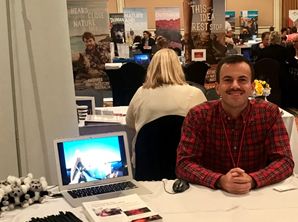
John Quertermous representing OA at the Australian Tourism Exchange
John Quertermous representing OA at the Australian Tourism Exchange
Famils
Offer free tickets to travel agents and tourism journalists. When you can, host them for a drink before the show to learn more about their needs and answer questions about what you offer.
Customer service
Deliver consistent customer service. We employ sales staff dedicated to serving travel agents and hotel concierge. The travel industry appreciates relationships and having a go-to contact.
Research
If you are considering selling to a particular market, read the resources that government agencies provide to help you understand how particular markets work and the characteristics of travellers from that market.
Conferences
Partner with your local visitor's bureau so you know when conferences and events are coming to your city. Conference organisers may buy tickets for a large group of delegates, or send delegates an offer to buy tickets.
Translate
Provide translations. We translates webpages, brochures and surtitles. We also offer simple language guides to help tourists decide on performances.
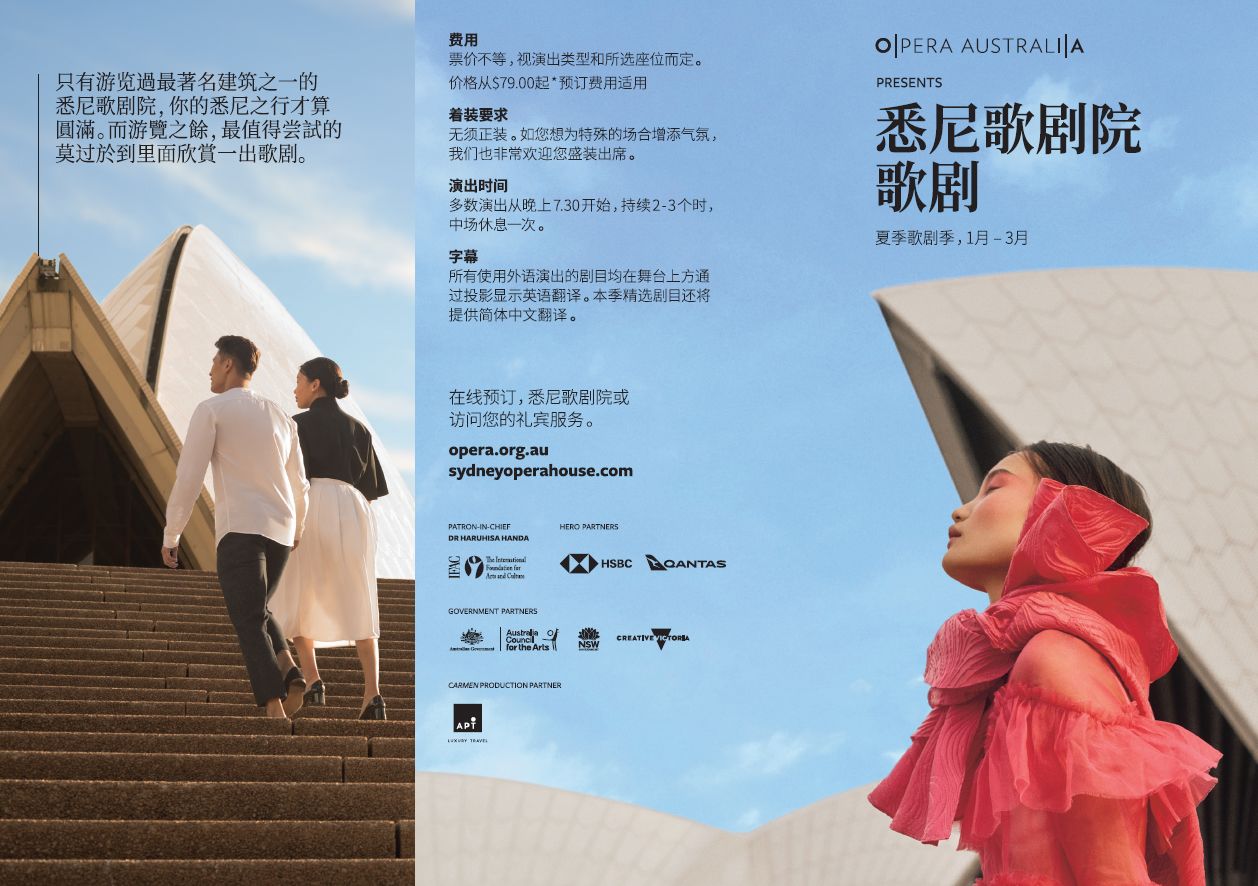
TripAdvisor
Ask customers to review you on TripAdvisor.
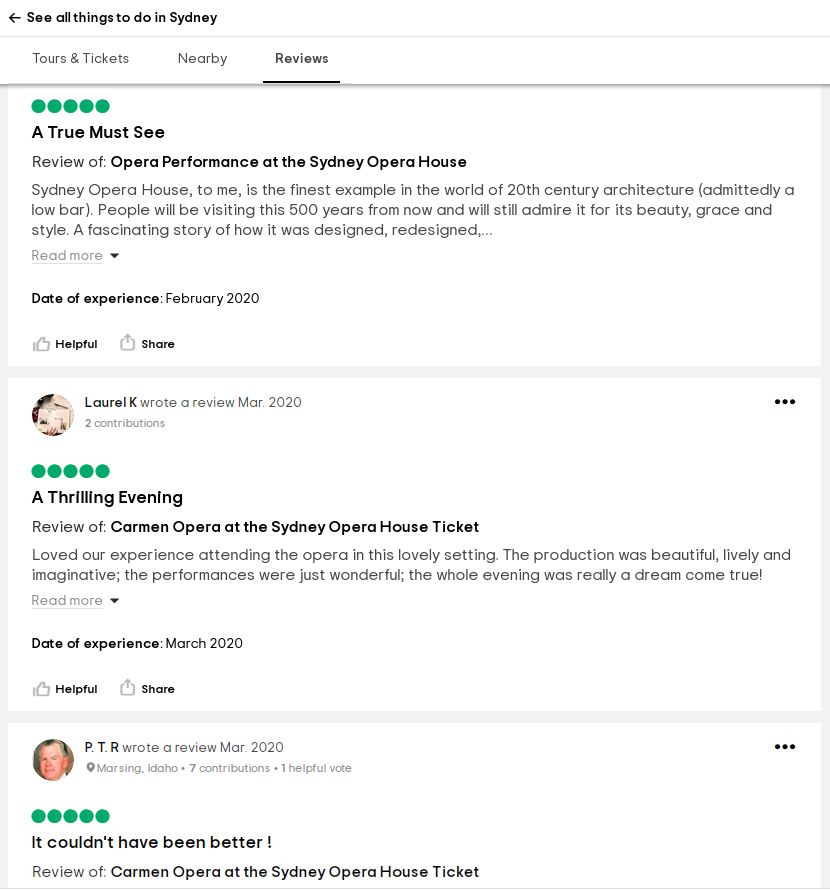
Distribution Channels
Meet customers where they're looking for solutions.
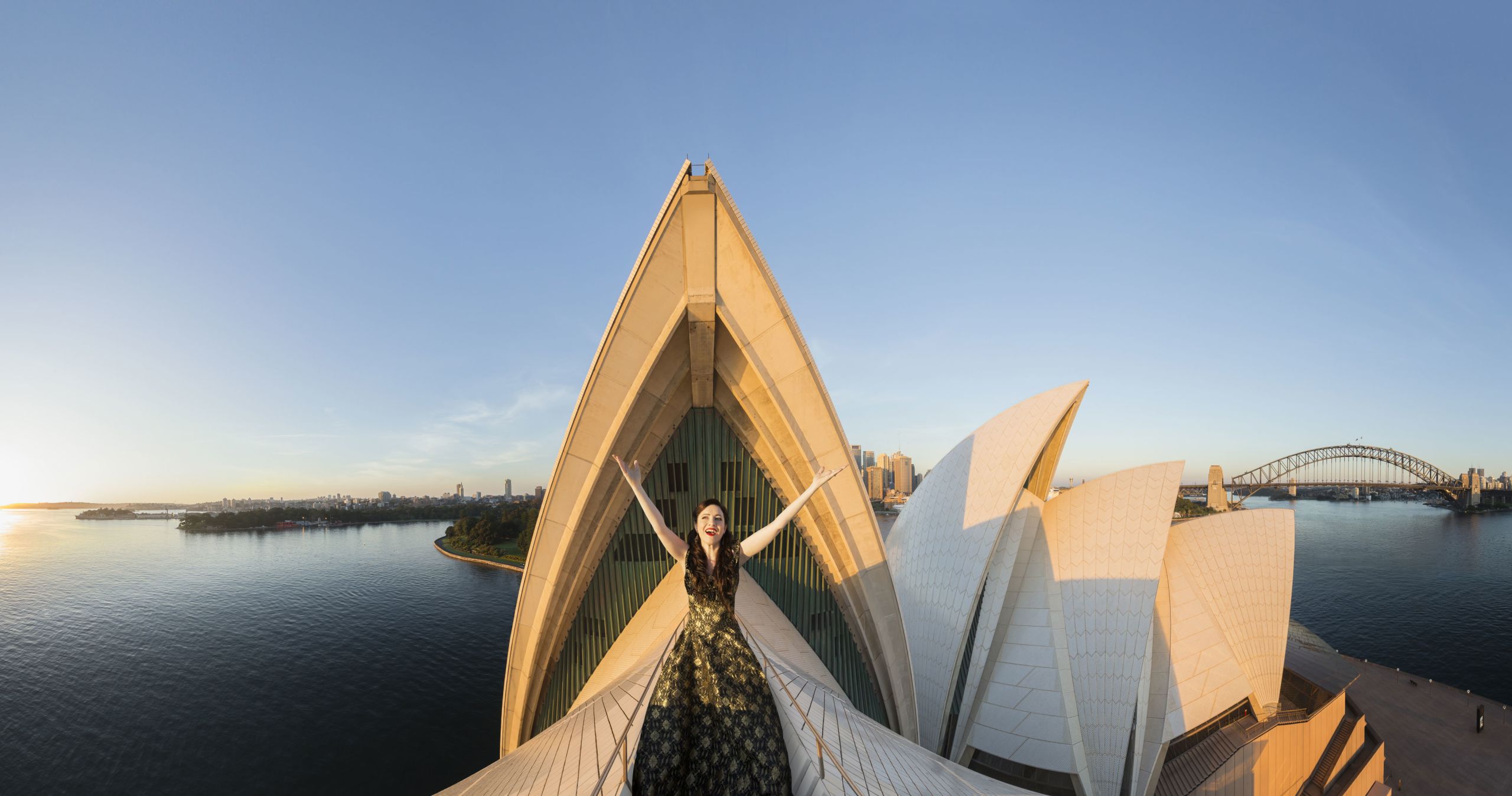
Selling benefits is not only about campaigns. It can also be about making your product available where people look for solutions for particular needs. In other words, expanding distribution and availability. Instead of only relying on our own marketing channels and ticketing outlets, we distribute content and tickets through a wide variety of channels. The ticket agents get commission, but only if they sell. Meanwhile, they advertise opera (for free) to their diverse groups of customers who may never have considered it before.
Sales channels
Here are examples of sales channels we use so that opera is presented as a solution to a variety of needs, where the customer is looking.
- Gift ideas: Red Balloon
- Experiences: Viator
- Holiday activities: Expedia or CTrip
- Entertainment for conferences or incentive trips: Business Events Sydney
- Impulse purchases: Groupon
- Last-minute rush: TodayTix

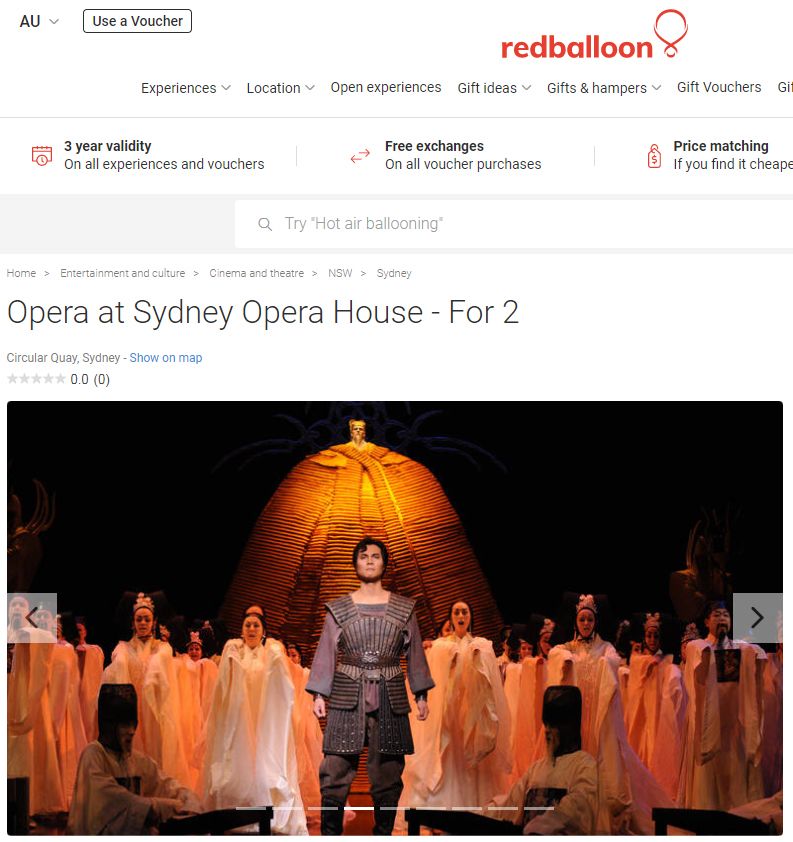


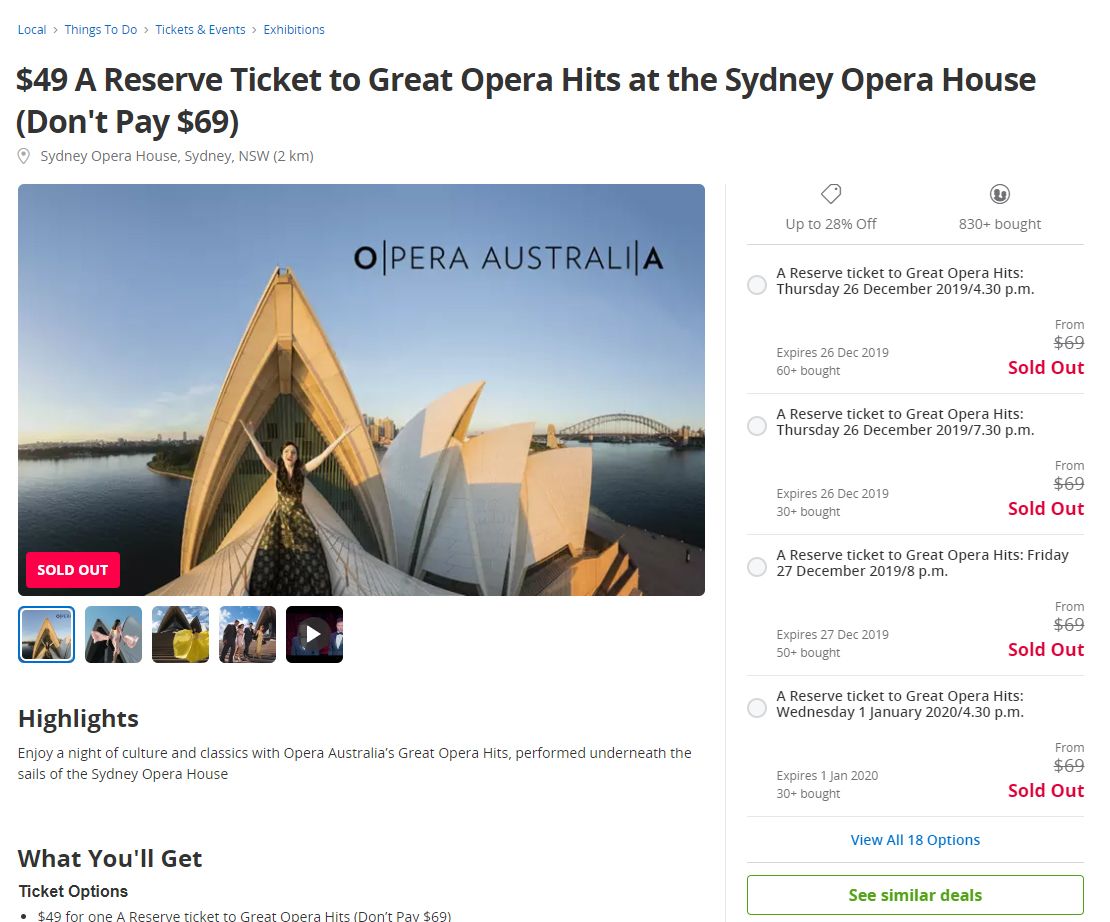
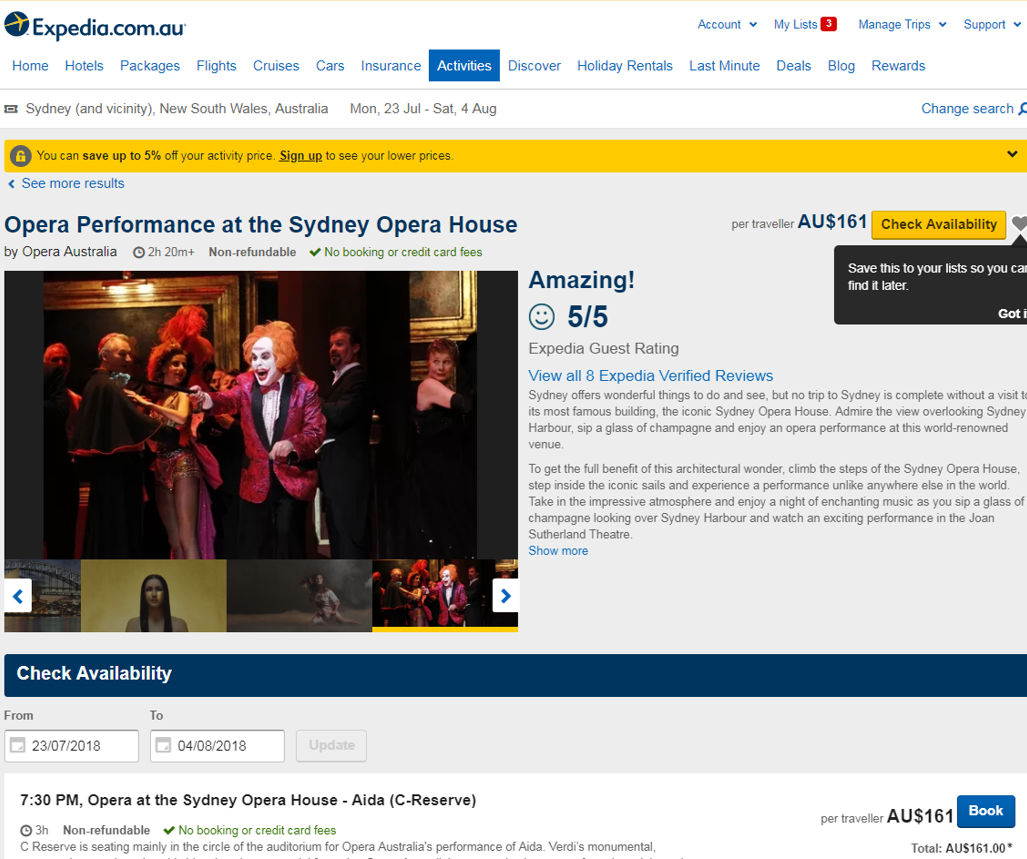
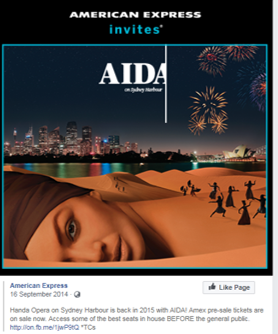











Content channels
We make content for other organisations' channels, so that opera is seen by a wider variety of people.
Tourism
We give Tourism Australia, Destination NSW, Qantas and other partners content that shows opera in spectacular settings.
Opera recaps + opera is drama.
Writer Rosie Waterland has a following for her hilarious television recaps, so marketing agency DDB suggested we ask for her take on opera, to make it accessible to a wider audience.
She reviewed Madama Butterfly:
"Like any despo woman who matches with a guy on Tinder, when Pinkerton doesn’t immediately send a dick pic, Butterfly decides he is perfect and decent and must be her soulmate. She immediately tells her besties."
And La Bohemè:
"... hoo-boy, did it bring up some drunken, messy memories from my uni days. Seriously — remember being young and poor and living in a share house and only being able to afford Mi Goreng for every meal, yet still somehow managing to scrape together nine bucks for Passion Pop every second night so you could ignore your essay and hook up with randoms?"
And Rigoletto:
"DUN DUN."
As part of this campaign, DDB also created a film to promote opera to drama lovers.
How-to videos
Tapping into a popular genre on YouTube, we asked Ketchup to make twenty how-to videos to show off the many talents that go into making opera.
Opera babies
Truth be told, we didn’t have a distribution partner in mind when we dressed eleven babies in miniature opera costumes. We just couldn’t resist.
Enhancing the experience
Make the customer feel like a star.
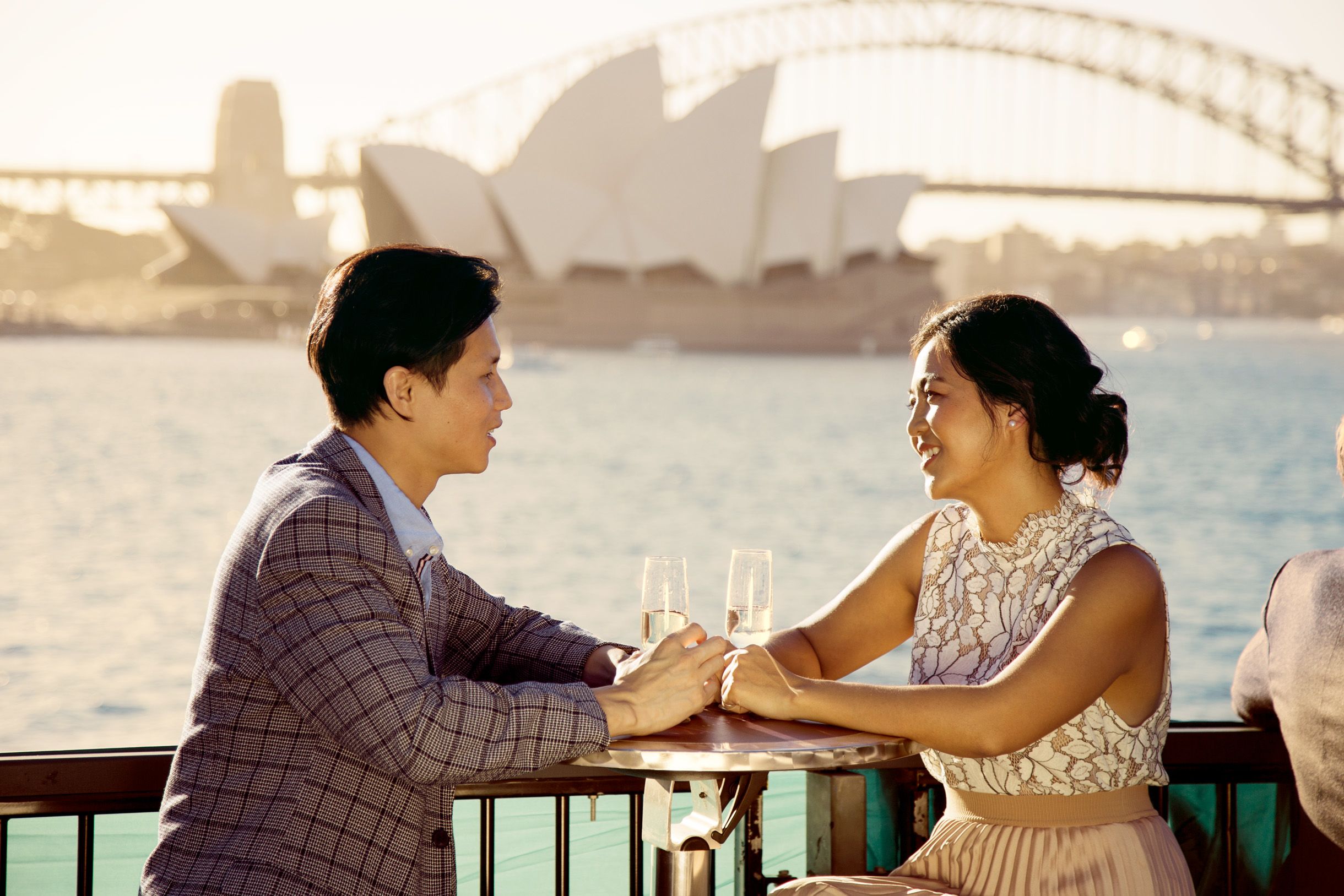
Experiences are a great business to be in. Data out of the United States records spending on experience-related services growing at nearly four times the rate of equivalent expenditure on goods. “American consumers are consistently voting with their wallets to buy experiences rather than products.” (The Art Newspaper)
For those of us who attend performances routinely, it is easy to underestimate how much is riding on a performance for occasional ticket-buyers. It might be a date, or a birthday present. They might have driven three hours to get there, or be hosting an overseas visitor. It is not routine.
Opera playing in an opera house is routine, but Paul and Amy going to the opera is a highlight of their year.
Everyone is starring in a movie, the movie of their life, and we can give them the chance to create one of the more remarkable nights in that life. We are not selling 300 performances a year, but 400,000 amazing nights.
Does this make the art a side-show in someone’s night out? Well, maybe. But when you go out to dinner, you may choose the restaurant based on the style of food and the restaurant's reputation, but the food is often really a side-show to spending time with friends.
Art has always been about the social experience. The architectural design of ancient Roman and Greek theatres were driven by social and political forces — so that audiences could be certain to be seen in attendance. Rossini made money from the casino attached to the opera house in Naples.
We've conducted what could be called an experiment by performing the same operas in three different locations. The opera is the same; the experience around the opera changes. At Arts Centre Melbourne, a popular opera sells 13,000 tickets. At the Sydney Opera House, 28,000 tickets. And at Handa Opera on Sydney Harbour, 50,000 tickets. The experience around the performance changes how many tickets you can sell.
Every New Year’s Eve, we stage an opera and concert, and make ten times more income than on any other night of the year. The difference is that it's a special night and you get to watch the fireworks from a coveted location, as well as seeing the performance.
There has been a shift in marketing. You have to push beyond what customers expect and surprise them. As Amazon CEO Jeff Bezos said, "In the old world, you devoted 30% of your time to building a great service and 70% of your time to shouting about it. In the new world, that inverts.”
In the arts, the works, artists and productions are outstanding. But the thing is, of course they are. If you’re paying $150 and going to your city’s major performing arts centre, spending six times more on a theatre ticket than you would at the cinema, outstanding is the least you expect. And when you get what you expect, however good that is, you don’t talk about it.
In the arts, the core product is sacrosanct. But we can redesign the experience around the product. Marketing teams can get involved in product development, which is otherwise taboo in the arts, although normal in other industries.
Adding experiences around the art is an arms-race. Quickly, new experiences go from being talked-about, surprising and delightful experiences, to a basic service customers expect. You have to continuously try new ideas, drop them if they fail, make them routine if they succeed, and try to think up new ways to trigger excitement. It’s hard work, both generating ideas, and inserting them into an already busy schedule when they are not business-as-usual for a company that runs like a machine.
Here are some of the ideas we've tried to enhance the experience of attending a performance. These experiences are designed to boost the way the arts enhance relationships, stimulate the imagination and build self-esteem. They fall into three categories:
Completing the night
Morris Hargreaves McIntyre’s Culture Segments methodology demonstrates that some members of the audience are looking for a social experience (Expression), and others are time-poor and more likely to attend if you arrange their whole evening and make it look easy (Release). To serve both groups, we arrange the whole evening.
Pre-performance dinner (with a view)
The northern foyers of the theatres at Sydney Opera House have breathtaking harbour views and were barely used before performances (the bars weren't even open). We realised that it would be a spectacular, peaceful and convenient place to dine. We negotiated with the caterer to offer pre-show dining. They now sell 8,000 dinners a year.
Pre-performance dinner (with a theme)
Arts Centre Melbourne worked with us to create themed dinners before the performance in the foyer to match the opera. Examples include flamenco dancers moving amongst tables during dinner to accompany performances of Carmen, and a wedding feast before the The Marriage of Figaro.
Dinner on us
Do a deal with a restaurant near your theatre. You’ll send them 50 customers every night before peak dining time if they’ll sell you a main course and a glass of wine for $25. Offer that to customers for free with a full-price ticket: dinner on us. Effectively, it’s a $25 discount but without saying discount or revealing the value. We move 3,000 tickets a year with this offer.
Party in the foyer
We created interval parties in the foyers by giving the whole audience sangria during Carmen, gelato at Don Pasquale, and frosted almonds at La Bohème. We saw an increase in word-of-mouth sales by offering this surprising extra. However, it is expensive and logistically challenging.
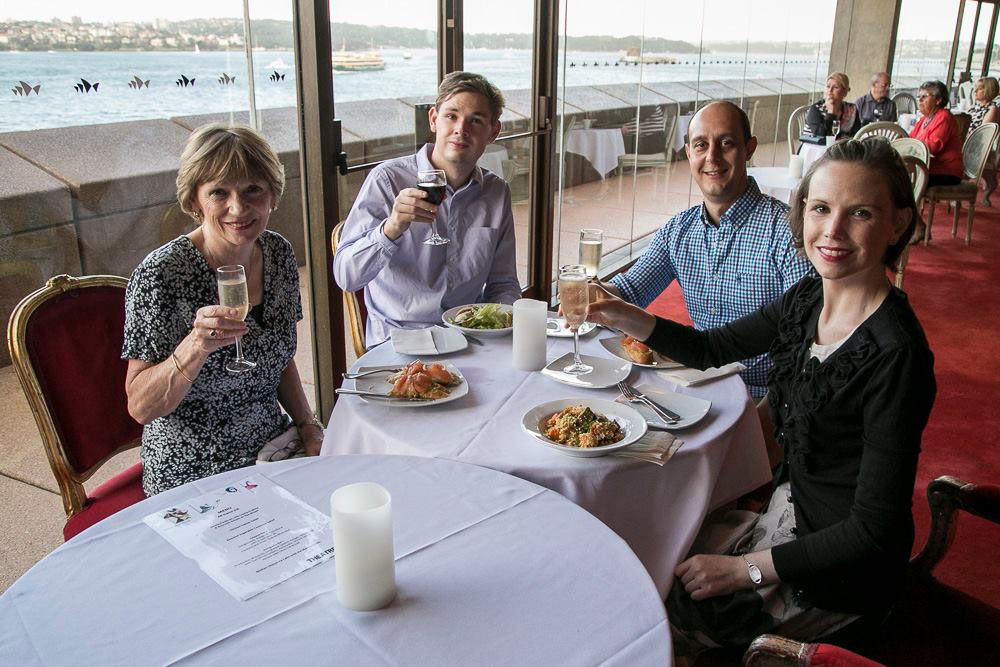
Dining before the performance in the Northern Foyer of the Joan Sutherland Theatre at Sydney Opera House. Photo: Justen Stoodley
Dining before the performance in the Northern Foyer of the Joan Sutherland Theatre at Sydney Opera House. Photo: Justen Stoodley
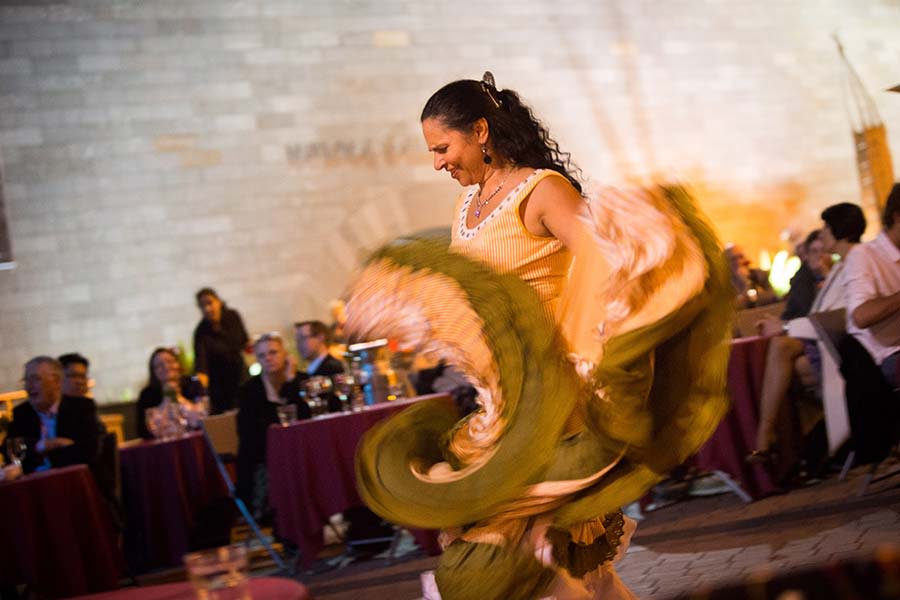
Flamenco dancing during dinner at Arts Centre Melbourne. Photo: Peter Casamento
Flamenco dancing during dinner at Arts Centre Melbourne. Photo: Peter Casamento
Make the audience the star
Here are examples of work that makes the audience member feel special and share their experience.
A photographer in the foyer
We hire a photographer to be in the foyer before every performance to take photos of the audience. We upload the photos to Facebook, so the people photographed can share their photo. The engagement level is high and it makes customers feel great. It also shows potential customers that all sorts of people attend, including people like them.
Costume box dress-ups
People love dressing up in old costumes. Offer capes and hats that can easily be placed over clothing.
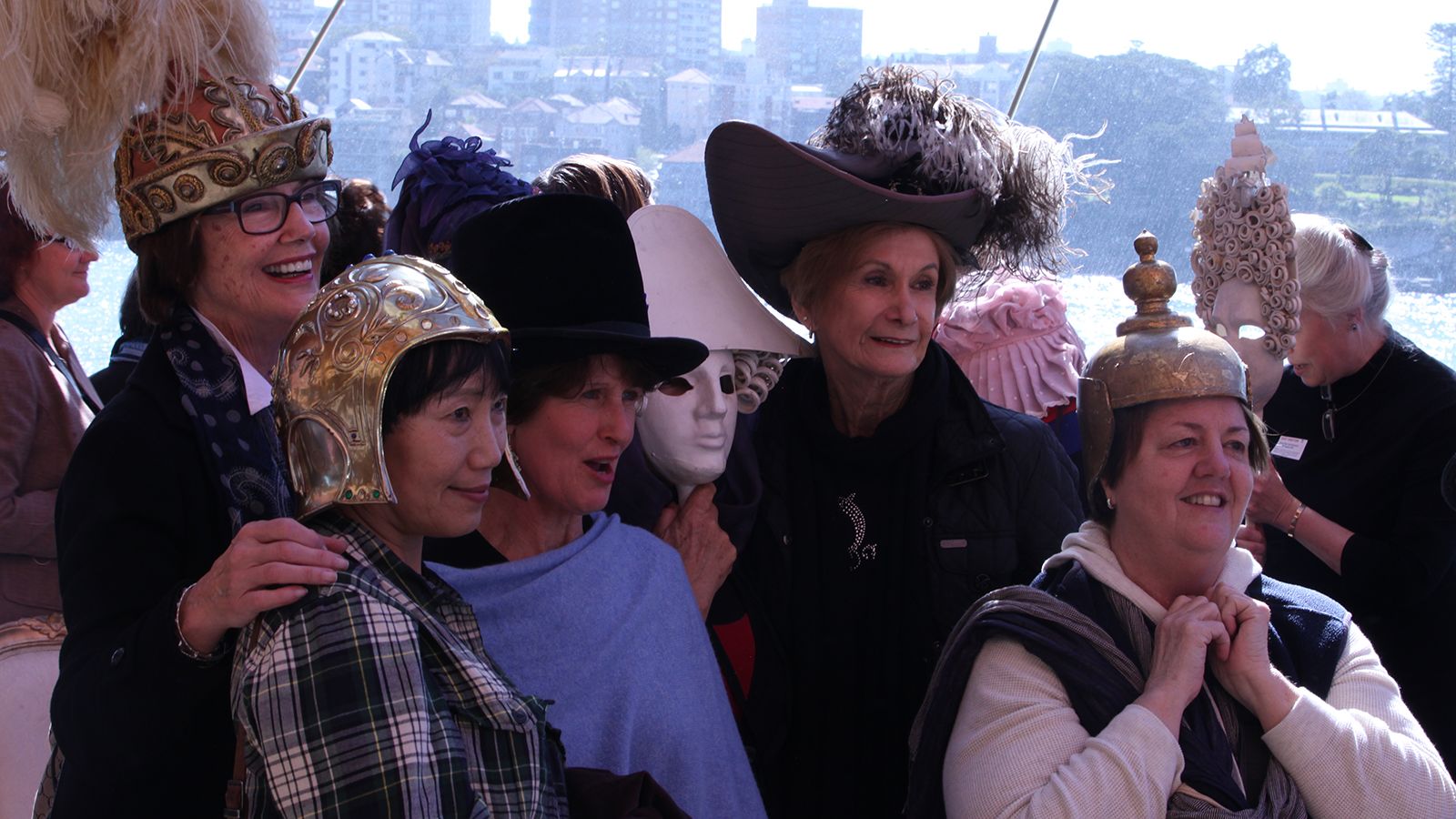
A character in the foyer
An actor in a costume in the foyer is swamped by customers wanting selfies. Not only is the experience of attending enhanced, customers do the marketing for you by sharing their photos. Interactive experiences like this are more popular than static displays.
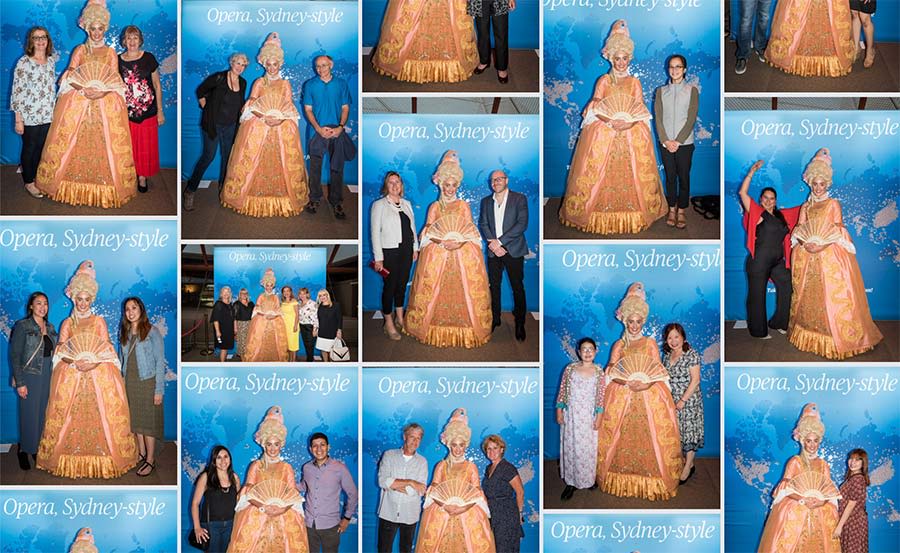
Last night at the opera on Facebook. Photos: Rhiannon Hopley.
Last night at the opera on Facebook. Photos: Rhiannon Hopley.
Theming the venue
The site at Handa Opera on Sydney Harbour is themed to match the opera: Spanish decoration and food for Carmen, Chinese for Turandot, Japanese for Madama Butterfly, etc. We offer prizes to customers who share photos of themselves at the opera on social media.
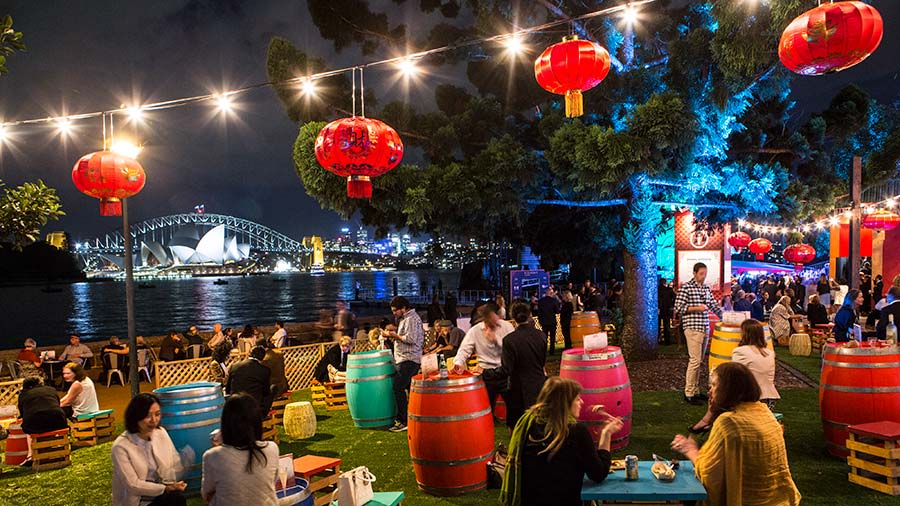
The Qantas Garden Bar at Handa Opera on Sydney Harbour for Turandot. Photo: Jamie Williams.
The Qantas Garden Bar at Handa Opera on Sydney Harbour for Turandot. Photo: Jamie Williams.
Dance classes
During a season of The Merry Widow, we invited customers to learn to waltz before the performance. Lots of people came to watch; few were brave enough to dance.
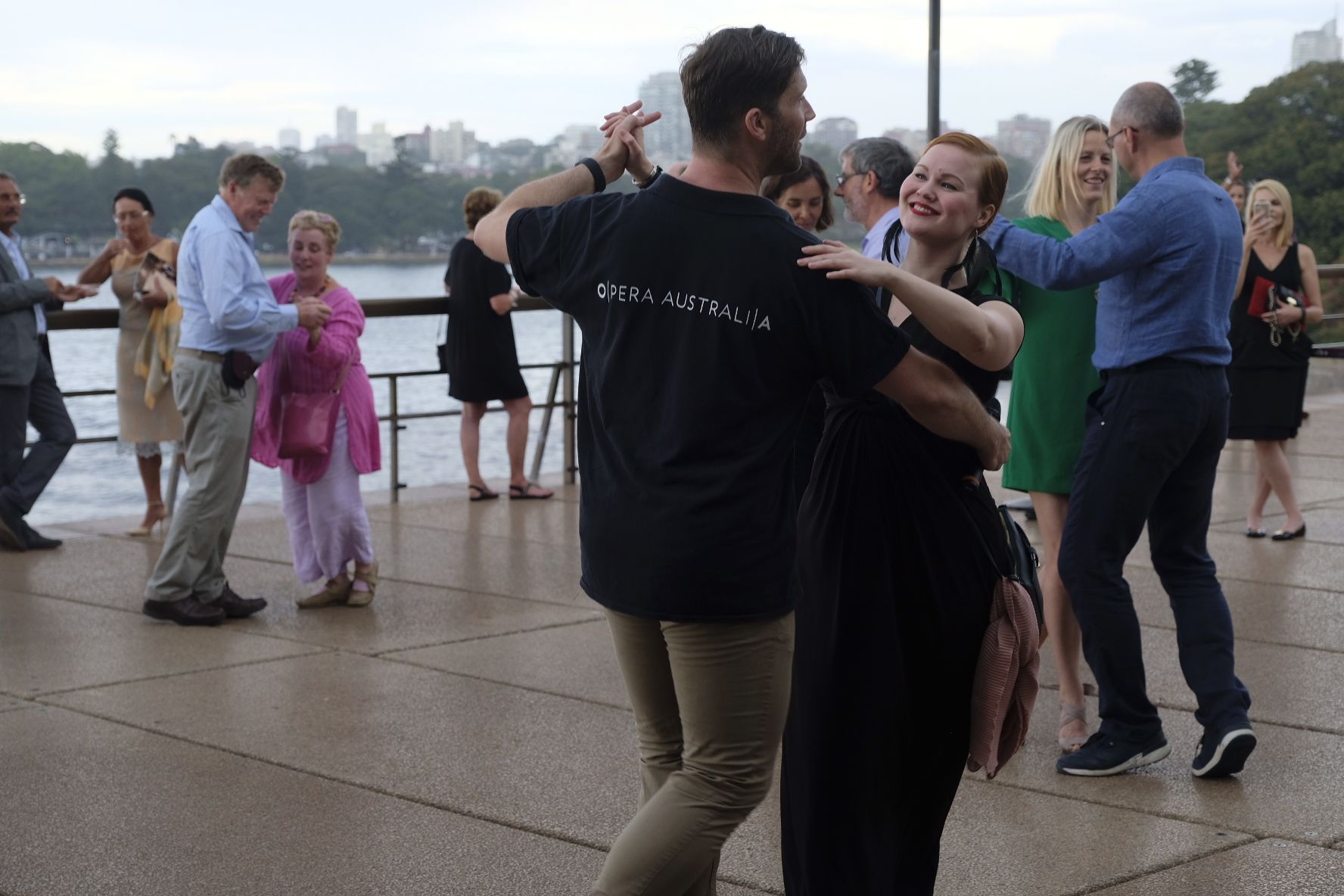
Where are you from?
We install a map of the world in the theatre foyer and asks people to attach a sticker over their hometown. It is so popular, stickers have to be cleared every week. People love to be recognised and see that others like them are there.

Toy koalas, dressed as Pavarotti
We gives thousands of toy koalas dressed like Pavarotti to travel agents and tourists, as a souvenir to link opera and Australia in their minds. We gave a group of US philanthropists koalas at a performance. The next day, the tour organiser got in touch and asked for five more for a guest's grandchildren.

Special access and information
Giving audience members ways to learn and get closer to the art form.
Opera for one
Did you know that 22% of Americans who would like to attend arts events don’t go because they have no one to go with? (National Endowment for the Arts)
When our own research revealed the same problem in Australia, we created Opera for One. At selected performances, we hold an event for those attending alone to hear a talk about the performance and meet each other. Not only is it addressing a social need, it’s giving people a personal connection that online entertainment cannot match. Media wrote about it and the people who attend have a great time. However, not many people are brave enough to attend.
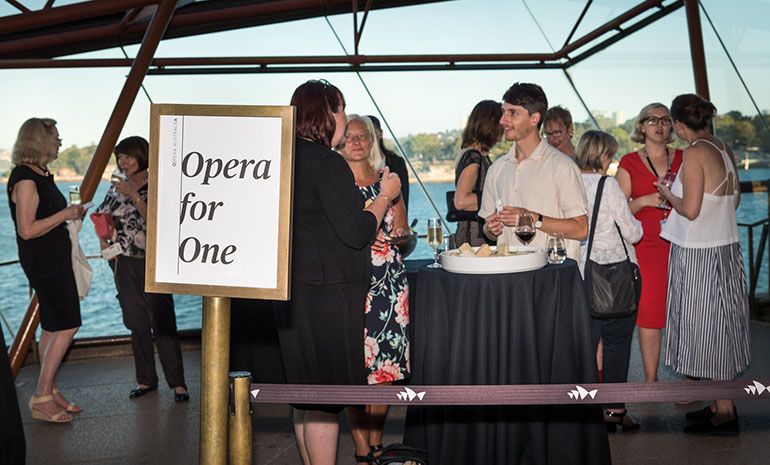
The Susan and Isaac Wakil Foundation Access Program
People who have never been to the opera before enter a ballot to win the opportunity to attend the opera for just $20. Thousands of people have been to the opera for the first time on this program, generously subsidised by the Susan and Isaac Wakil Foundation.
We love hearing about these first-time experiences.
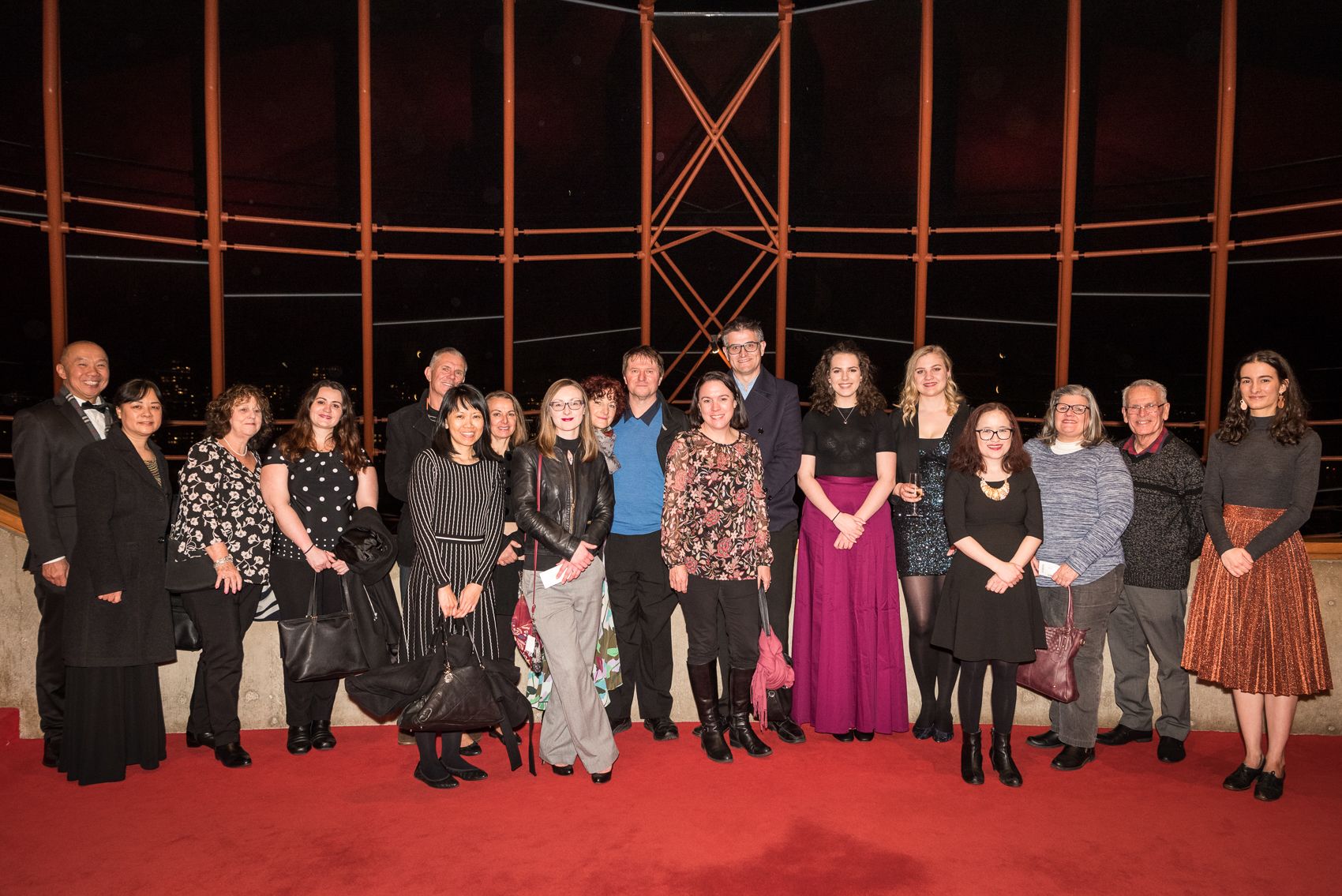
First-timers at the opera, thanks to the Susan & Isaac Wakil Foundation. Photo: Rhiannon Hopley.
First-timers at the opera, thanks to the Susan & Isaac Wakil Foundation. Photo: Rhiannon Hopley.
The Ultimate Opera Weekend
The Ultimate Opera Weekend offers a deep-dive into opera, with four performances and several talks, behind-the-scenes tours, and meals packed into a single weekend. For people who live outside the city, it's an efficient way to see multiple shows in one trip.
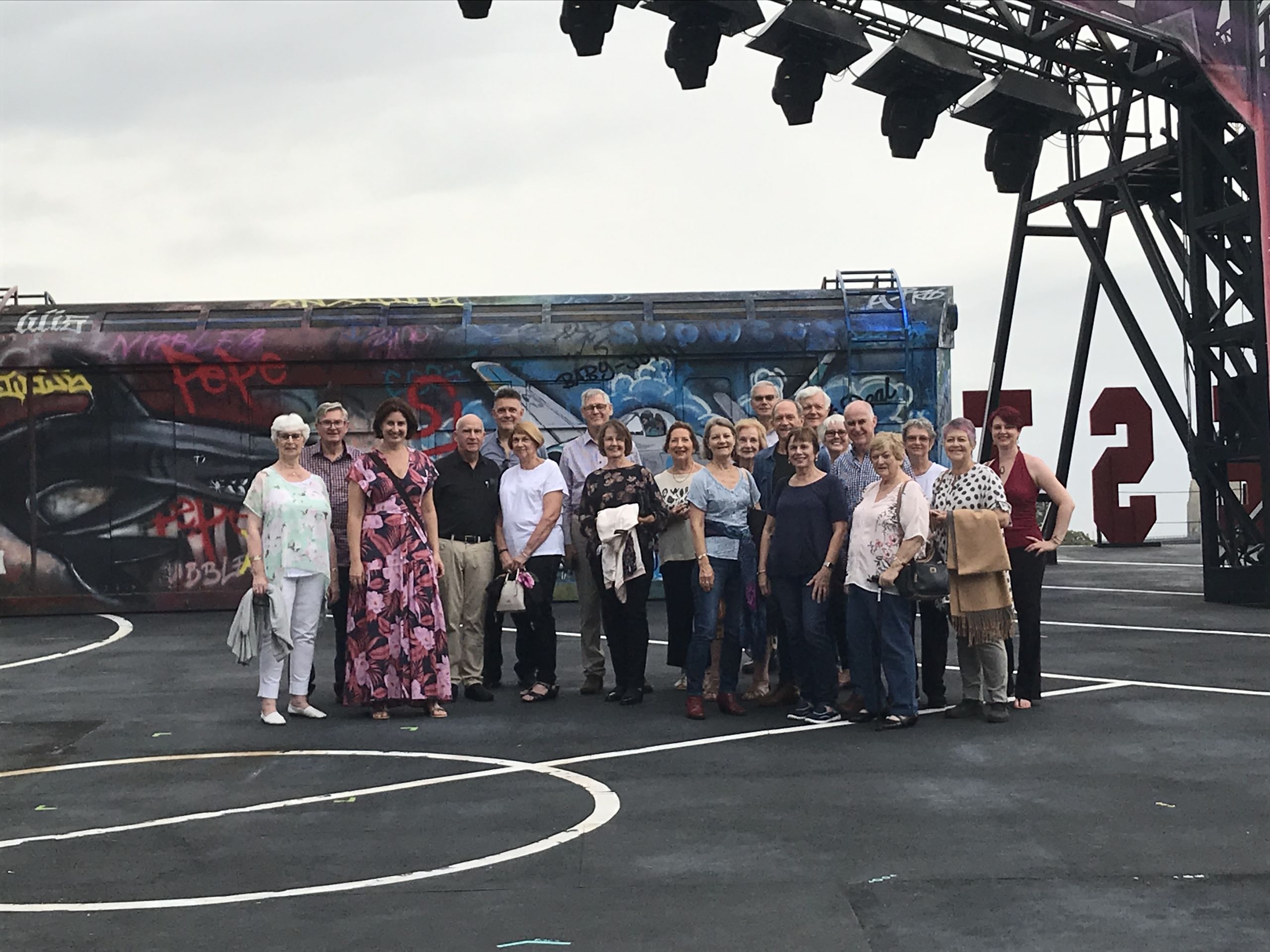
Opera Weekend participants on a backstage tour at West Side Story on Sydney Harbour.
Opera Weekend participants on a backstage tour at West Side Story on Sydney Harbour.
Pit and Perch
Watch half of the performance from the side of the stage (the perch), where you can see the crew at work and the performers getting ready, and half of the performance from inside the orchestra pit, where you gain a different perspective on music you love. For a keen opera fan, it’s an enriching experience.
Cheat sheet
We publish cheat sheets about each opera online and hand out printed copies at performances. As well as a historical snapshot and information about the production, they include conversation starters, to help people discuss the opera. Did you know that Casanova advised on the libretto of Don Giovanni? We’ve heard people queuing for the bathroom using these facts to start conversations.
Costume displays
Display costumes in the foyer or the local shopping centre, so customers can see the detail, showing people who are interested in fashion that this is an element of opera too.
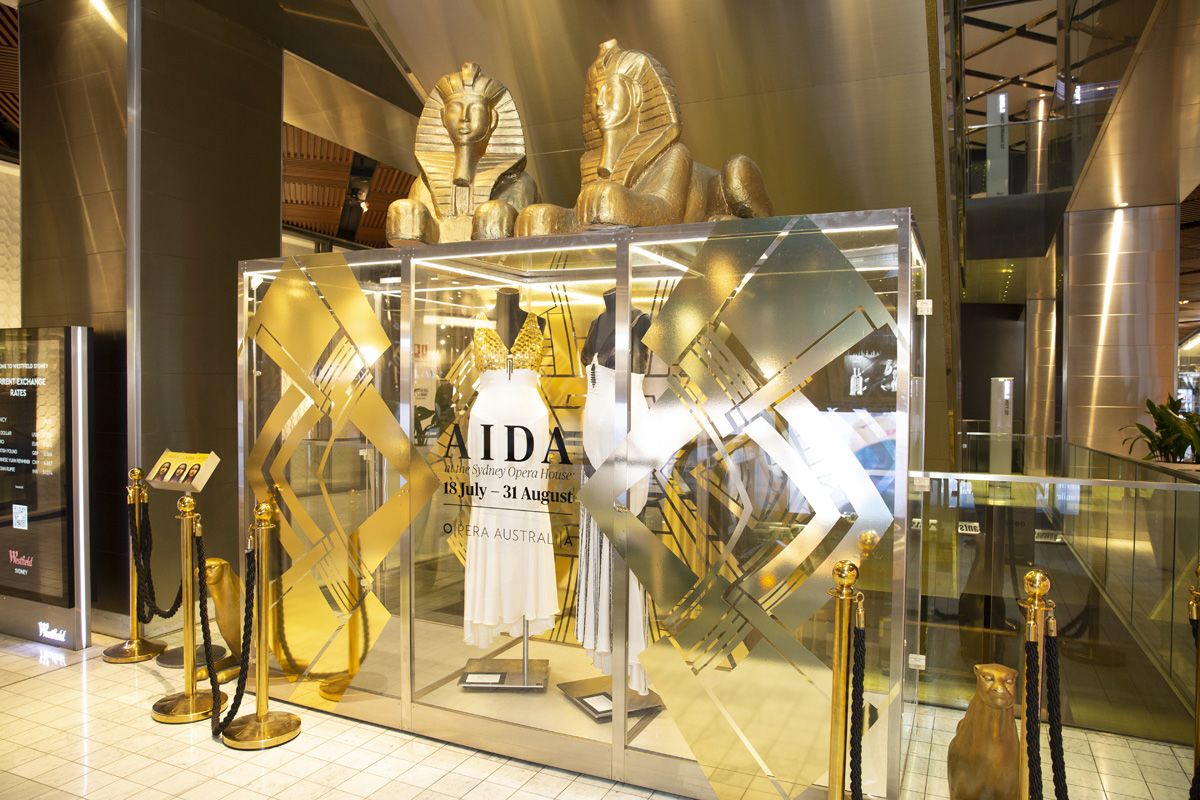
A display of Aida costumes and props at the Westfield shopping centre in central Sydney.
A display of Aida costumes and props at the Westfield shopping centre in central Sydney.
Tours
A tour of the workshop in which sets are built and painted, props made, costumes sewn, wigs threaded, and performances rehearsed allows people to see how opera is made and why it is so expensive. If they have a particular interest in fashion, painting, metalwork or any other craft, it’s a great first step into appreciating the art form.

Demonstrating making a wig
Demonstrating making a wig
Highlights concerts
When you are performing, time stands still. You’re in “flow”, thinking of nothing but the next note, word, cue. That may be why performances can be longer than the audience wants: the artists don’t feel it. We put on concerts of opera highlights — 60 minutes of music — plus introductions and interval. This format has unlocked an additional audience for whom an hour of opera is exactly enough. Due to demand, we’ve quadrupled the number of these short performances.
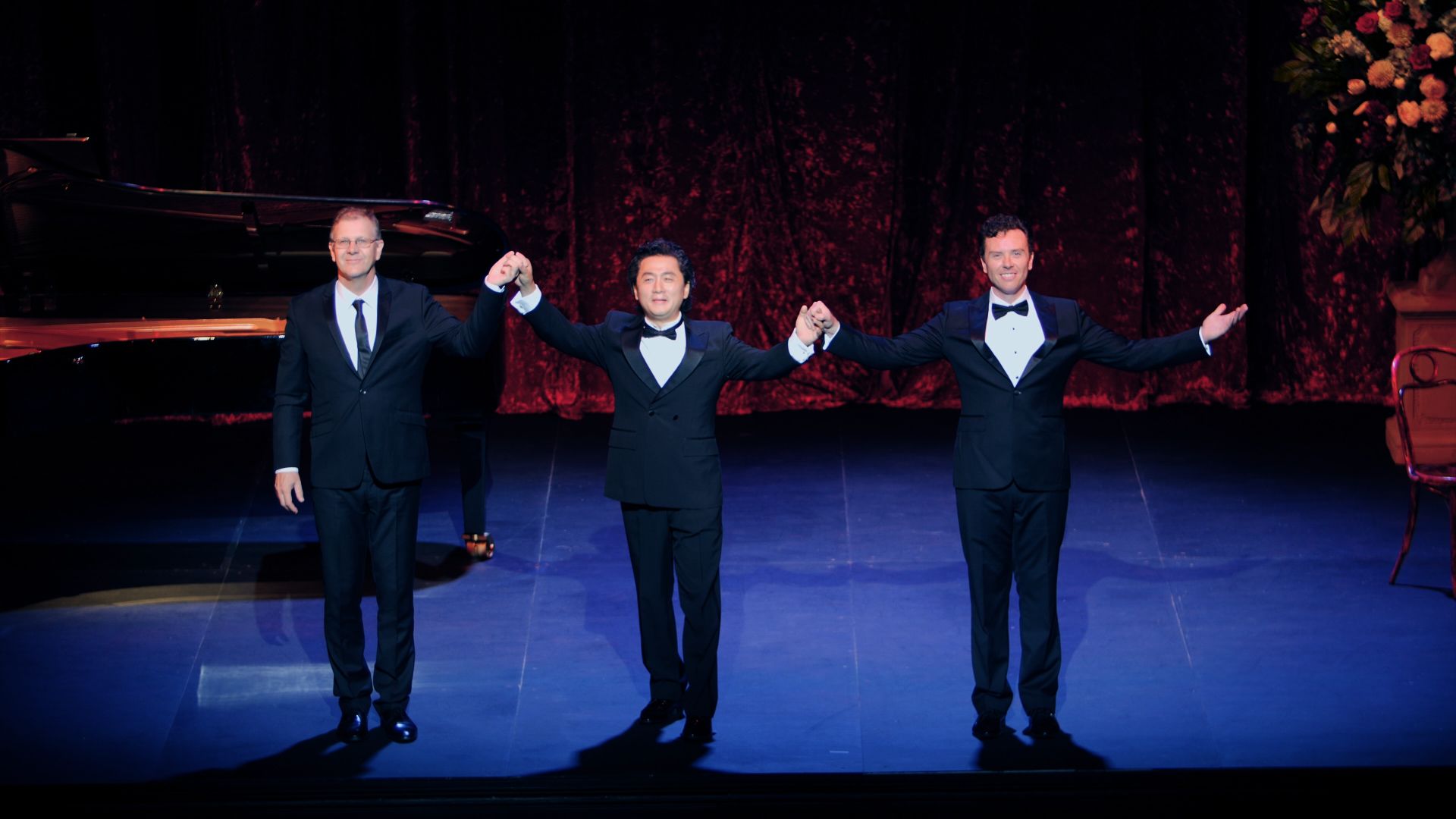
Guy Noble, Simon Kim and Andrew Jones present Great Opera Hits
Guy Noble, Simon Kim and Andrew Jones present Great Opera Hits
Subscriber care program
Subscribers are very important customers for us, as they are for many performing arts companies. We give our subscribers the opportunity to come behind-the-scenes at events like rehearsals, talks and tours.
Conclusion
Find your unique strategy.
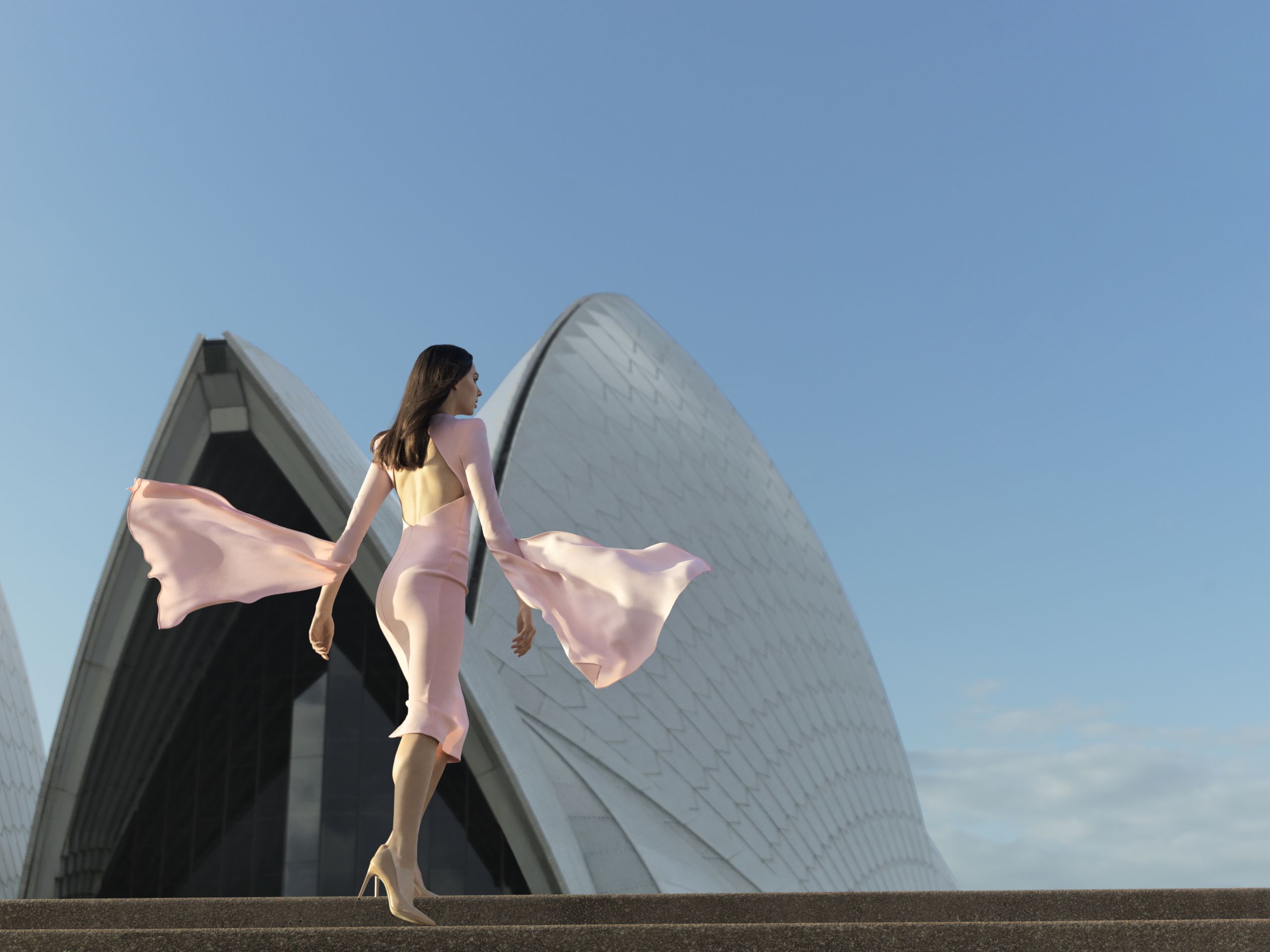
We're not suggesting that you copy what Opera Australia has done. Far from it. Rather, we want to show what happens when you understand and respond to your customers' motivations.
In our case, understanding the audience led to a suite of marketing activities and tactics built around the knowledge that the arts can help enhance relationships, stimulate the imagination and build self-esteem. That work has expanded the audience beyond those who intrinsically value art and respond to traditional arts marketing, delivering more customers, creating more resources for the art form, and maybe even creating a few more opera lovers in the process.
What will you discover about your audience?
Georgia Rivers has held senior marketing, producing and board roles for high profile arts companies in Australia and the UK, including Opera Australia, Australian Chamber Orchestra, Sydney Opera House, Sydney Philharmonia Choirs and Aldeburgh Music/Snape Maltings. Georgia presented on some of these ideas and about reaching wider audiences in this talk for Tessitura's Innovator Series.

